🇮🇹-0-0
Less than three months after returning from Japan 🇯🇵, it’s time for the long National Day holiday.
Since I already have a US visa and a three-year multiple-entry visa for Japan, I didn’t have to worry much about applying for a Schengen Visa because I could use the same documents.
Rome
We took an 11-hour flight from Tokyo with Alitalia and arrived in Rome 🇷🇴.
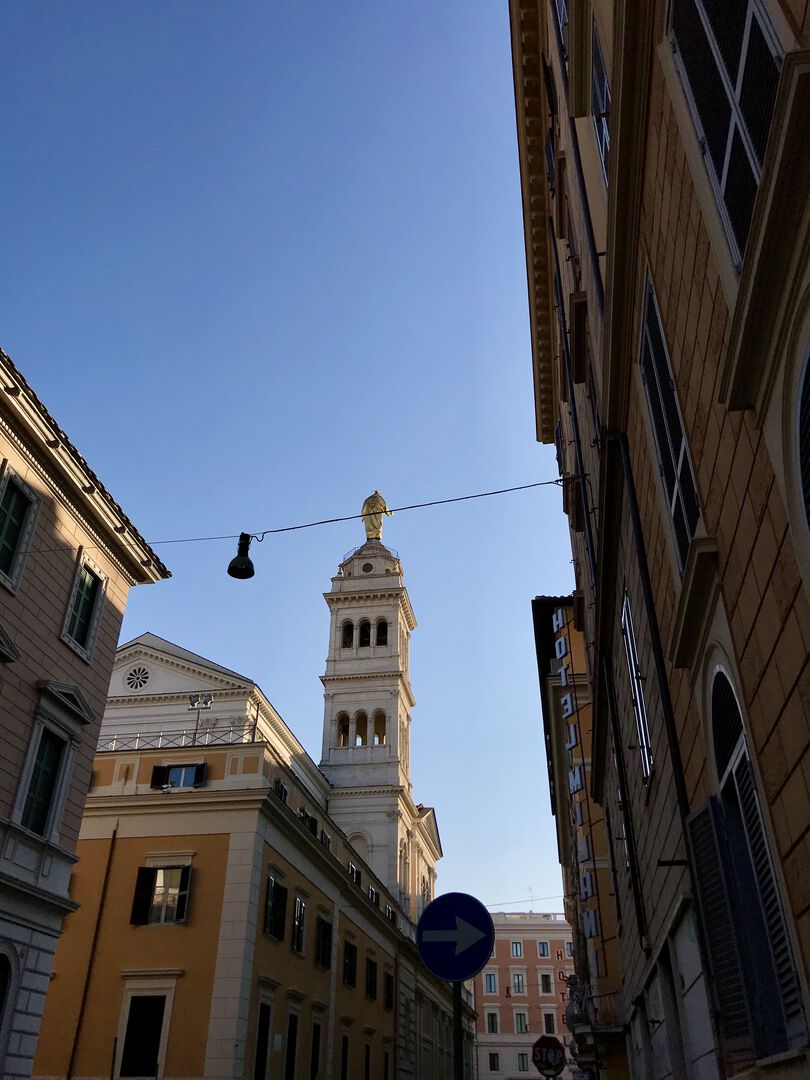
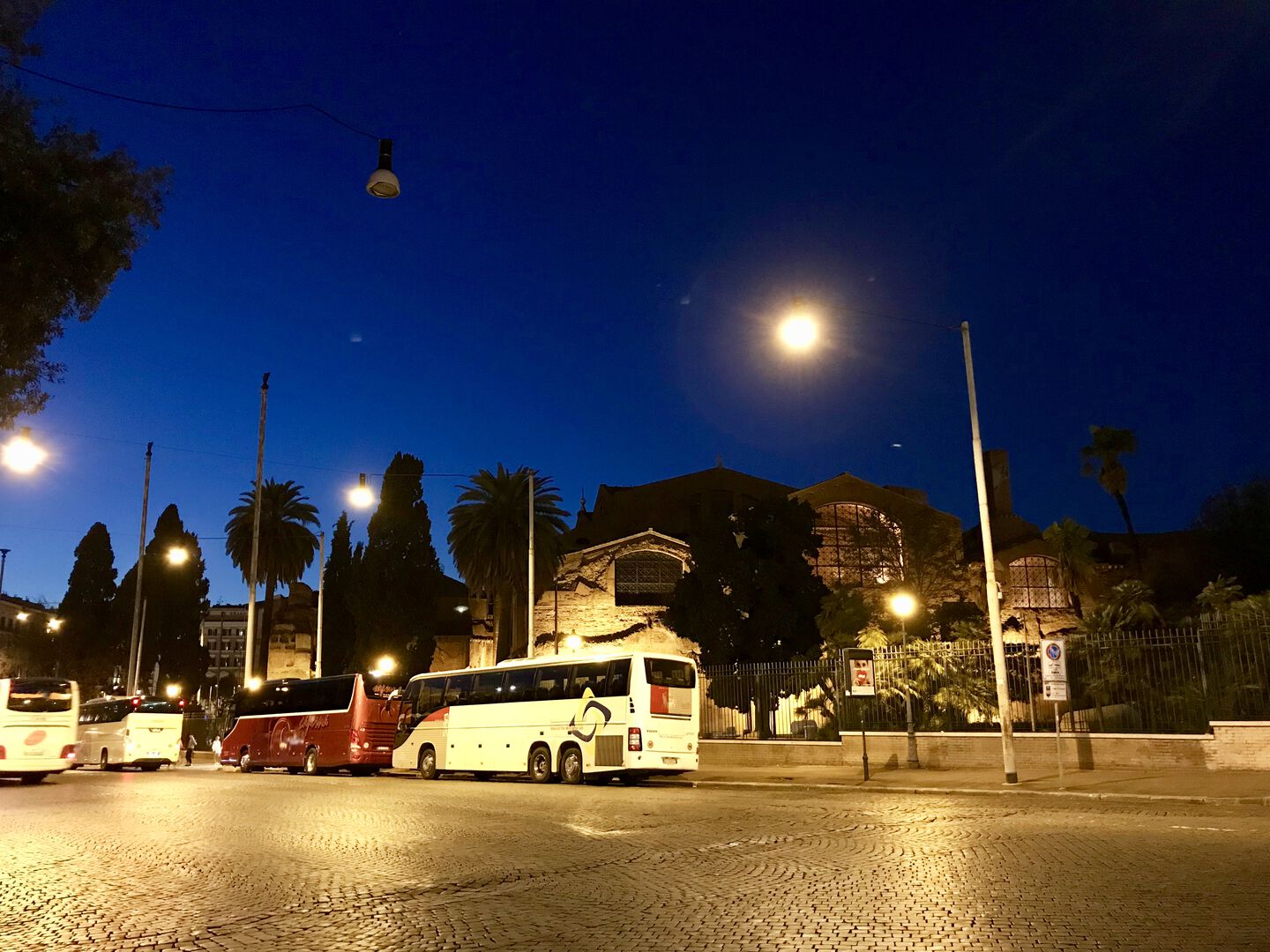
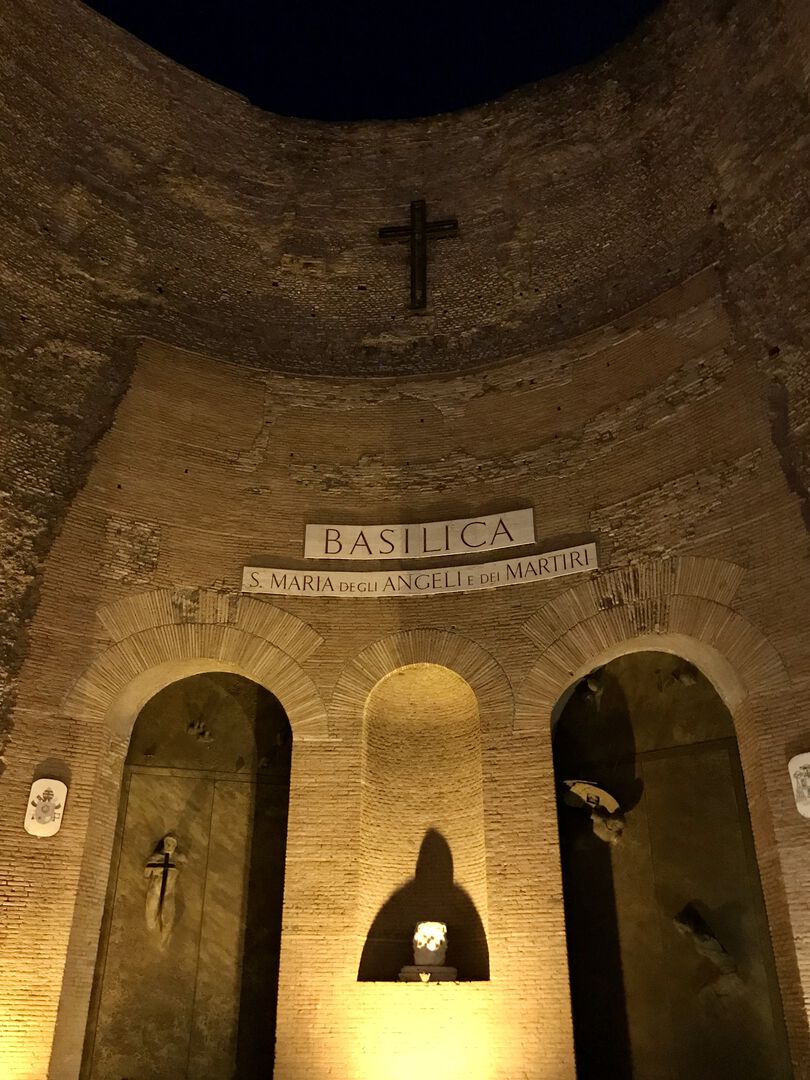
Sorrento
Unlike the commonly traveled Route from Rome to Florence to Milan to Venice, we took a different approach and traveled south by train to Sorrento.
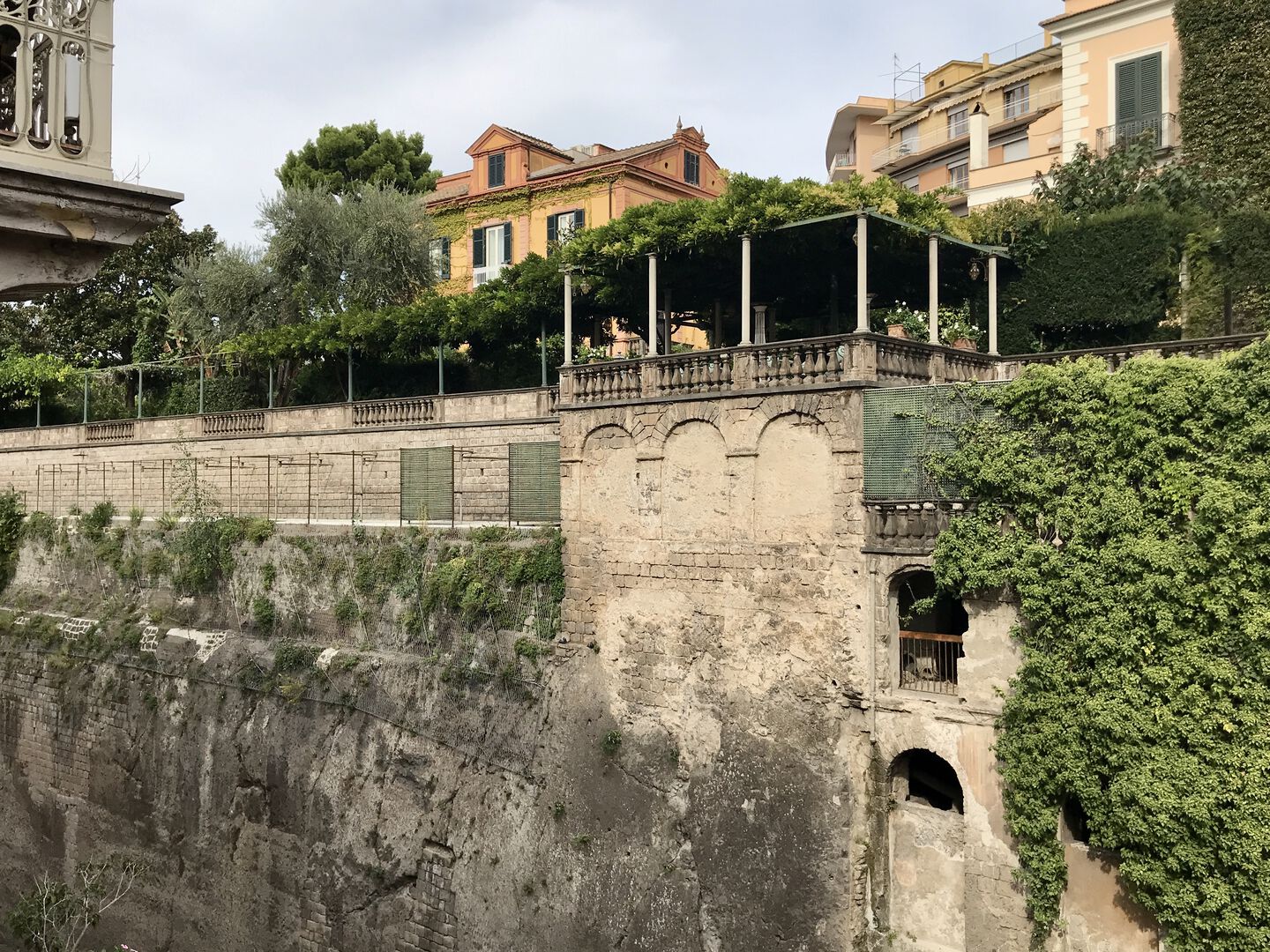
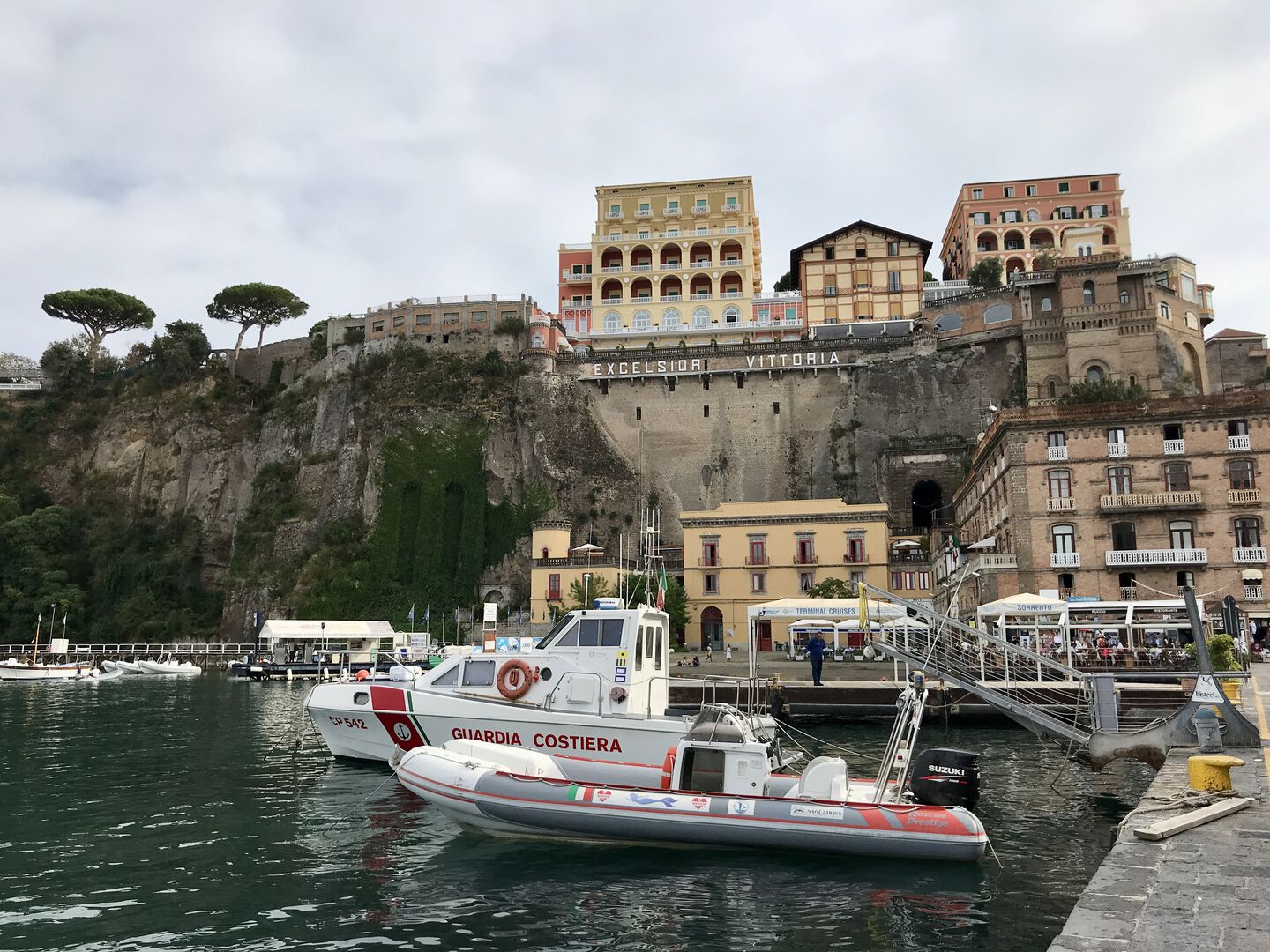
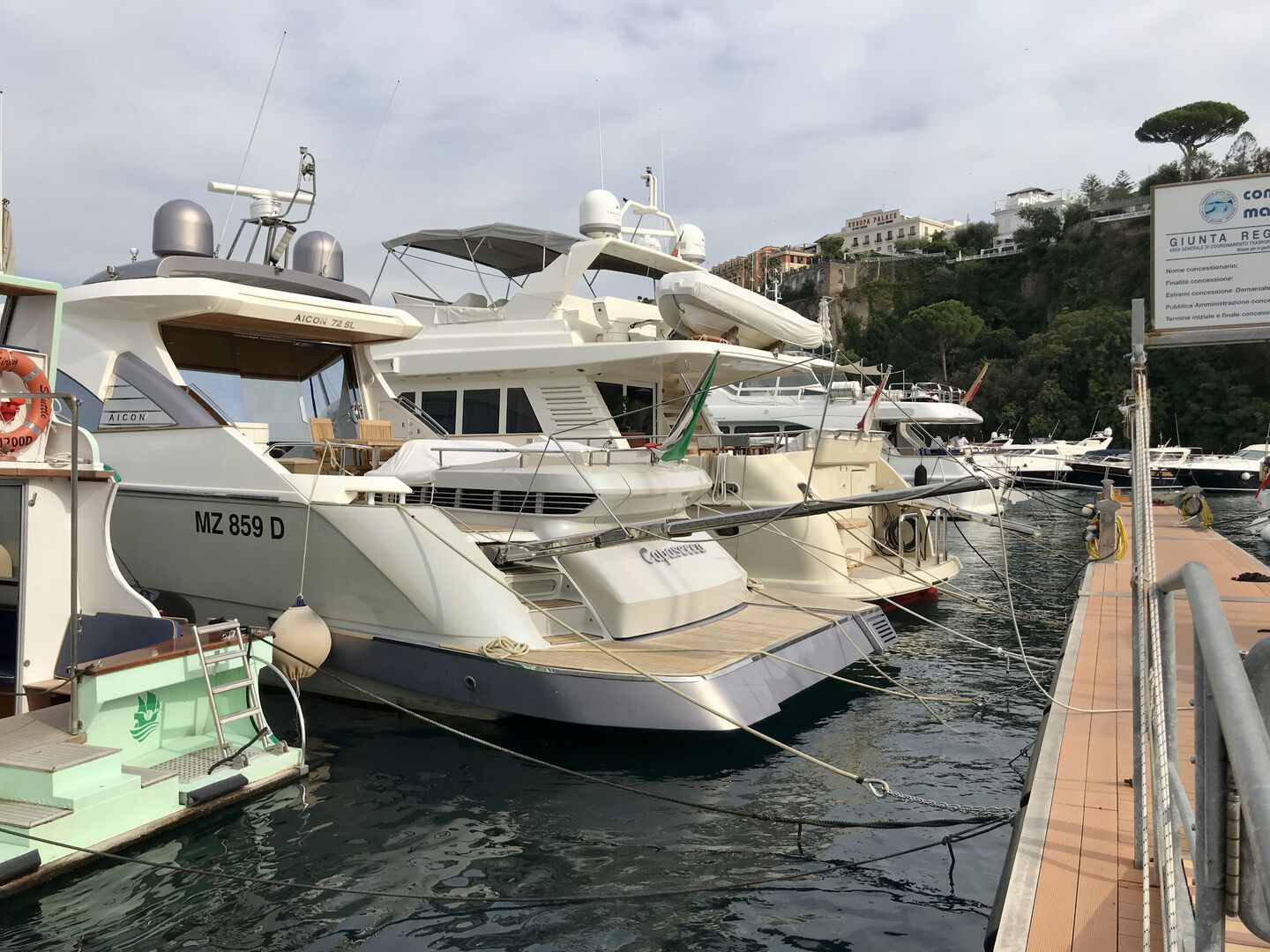
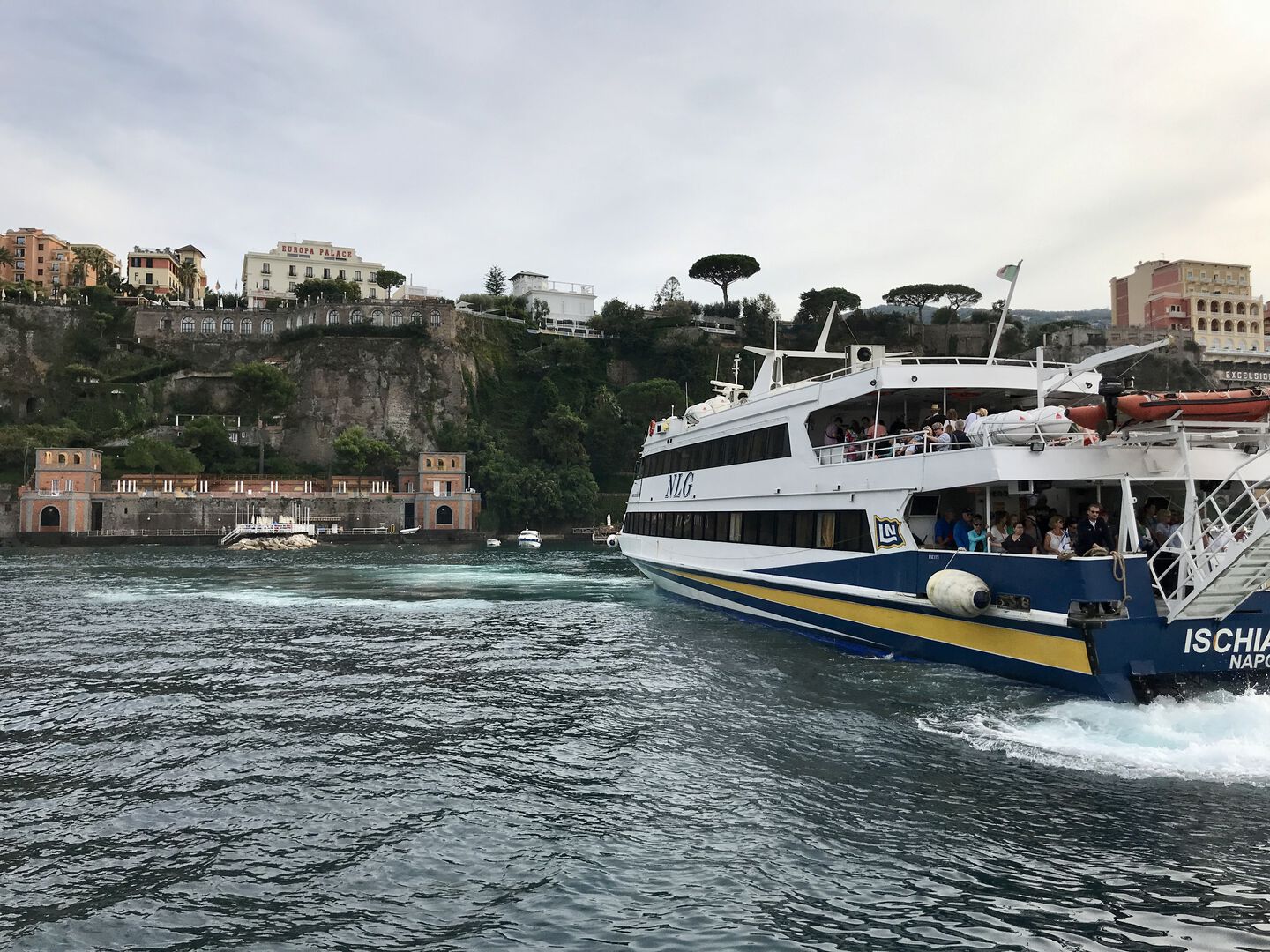
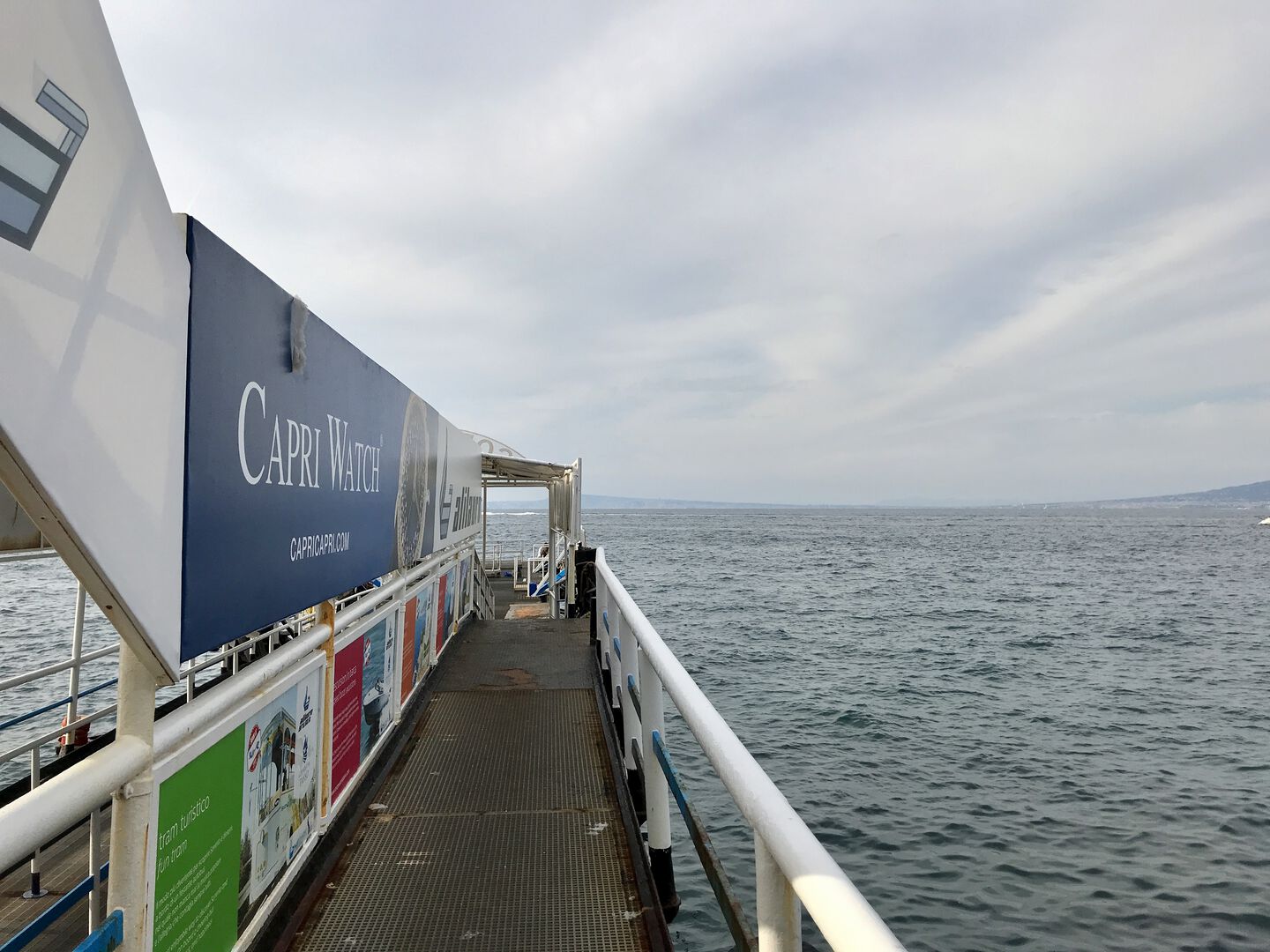
The small hill in the distance should be Mount Vesuvius.
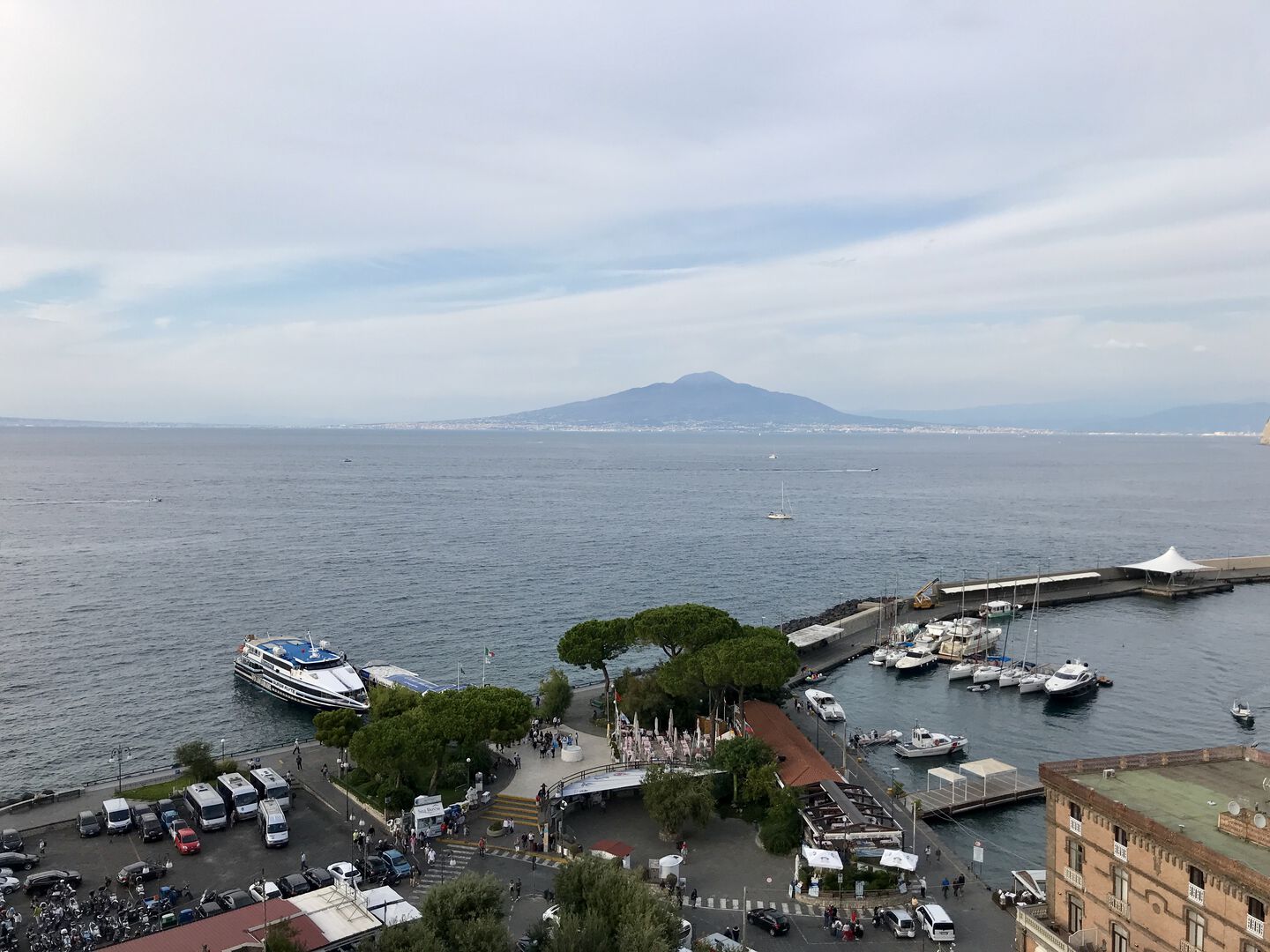
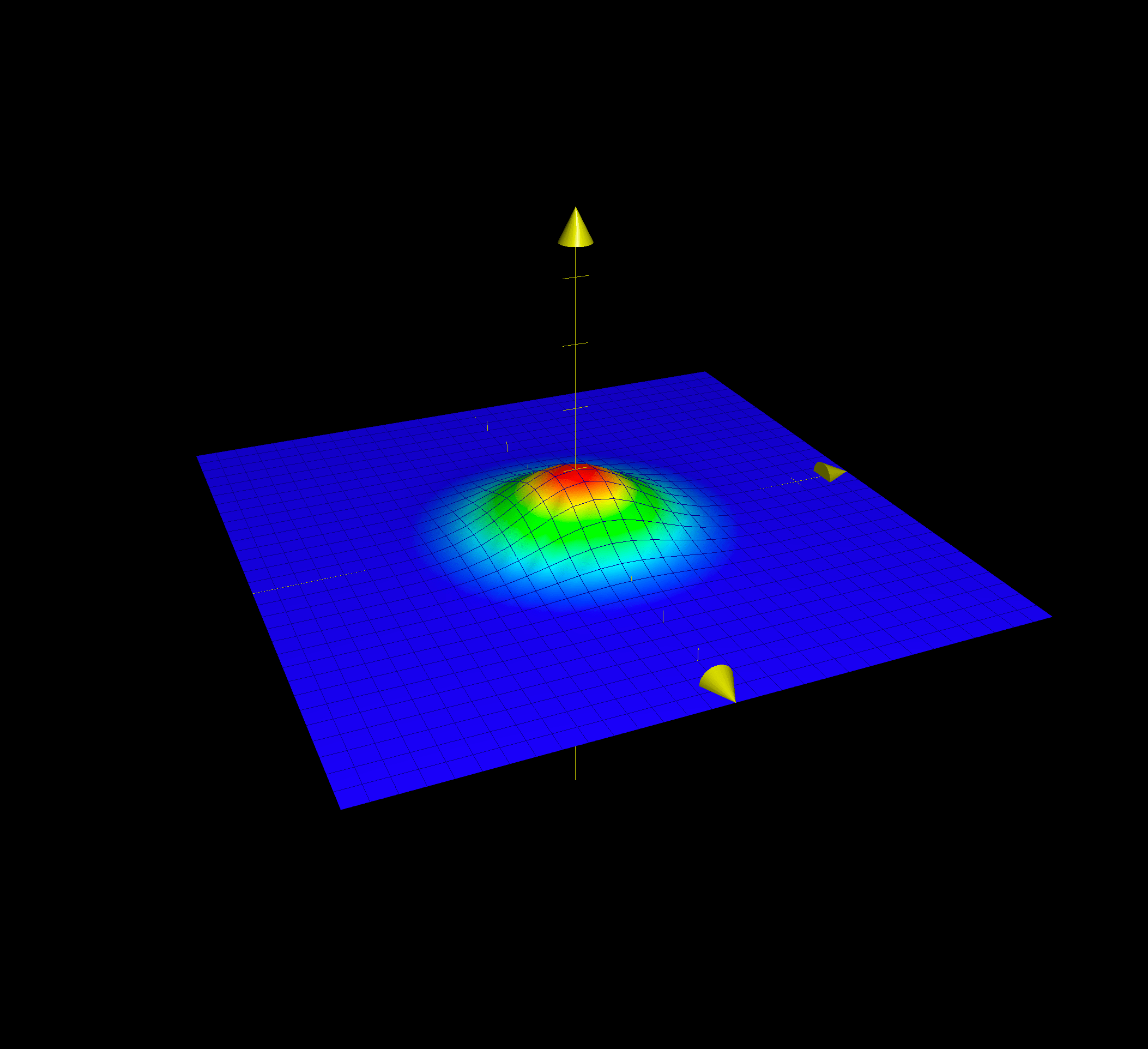
Pompeii
It preserved a large number of excavated cities under ashes and provided a unique glimpse into Roman life frozen at the moment it was buried, offering unusually detailed insight into the daily lives of its residents, although much evidence was lost in earlier excavations. It was a wealthy city with many fine public buildings and luxurious private houses, the extensive decoration, furnishings, and artwork being the main attractions for early excavators. Organic remains, including wooden objects and human bodies, were entombed in the ash and decayed away, making voids, the excavators found that the small voids were due to organic materials that had rotted away, and they could be used as molds to make plaster casts of unique, often gruesome, figures at the last moment of their lives. Many of the walls and rooms of the town are covered in graffiti, providing examples of the largely lost Vulgar Latin, as opposed to the formal language of literature preserved in the works of the classical writers.
Pompeii is a UNESCO World Heritage Site and one of Italy’s most popular tourist attractions, with approximately 2.5 million visitors annually.
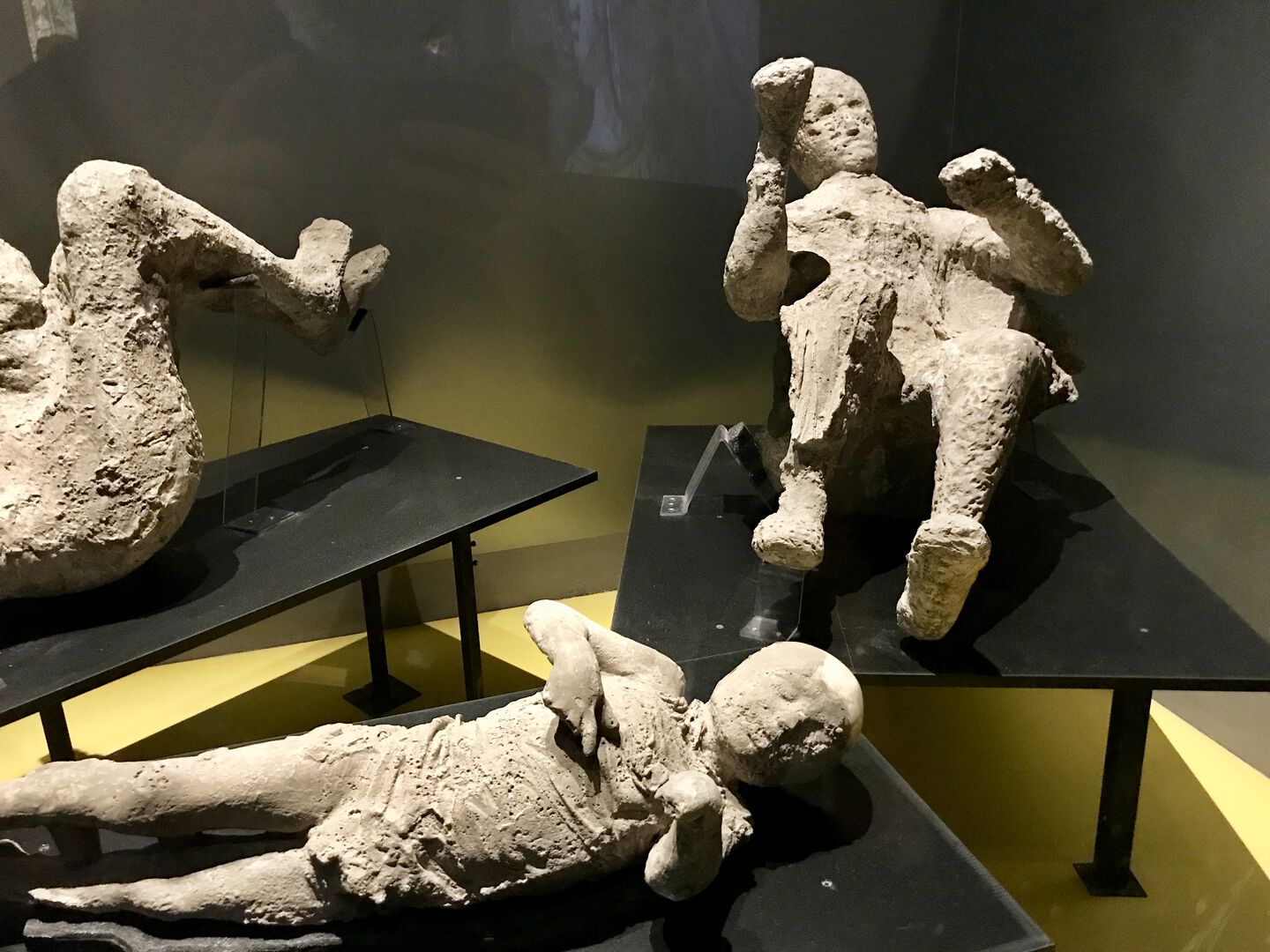
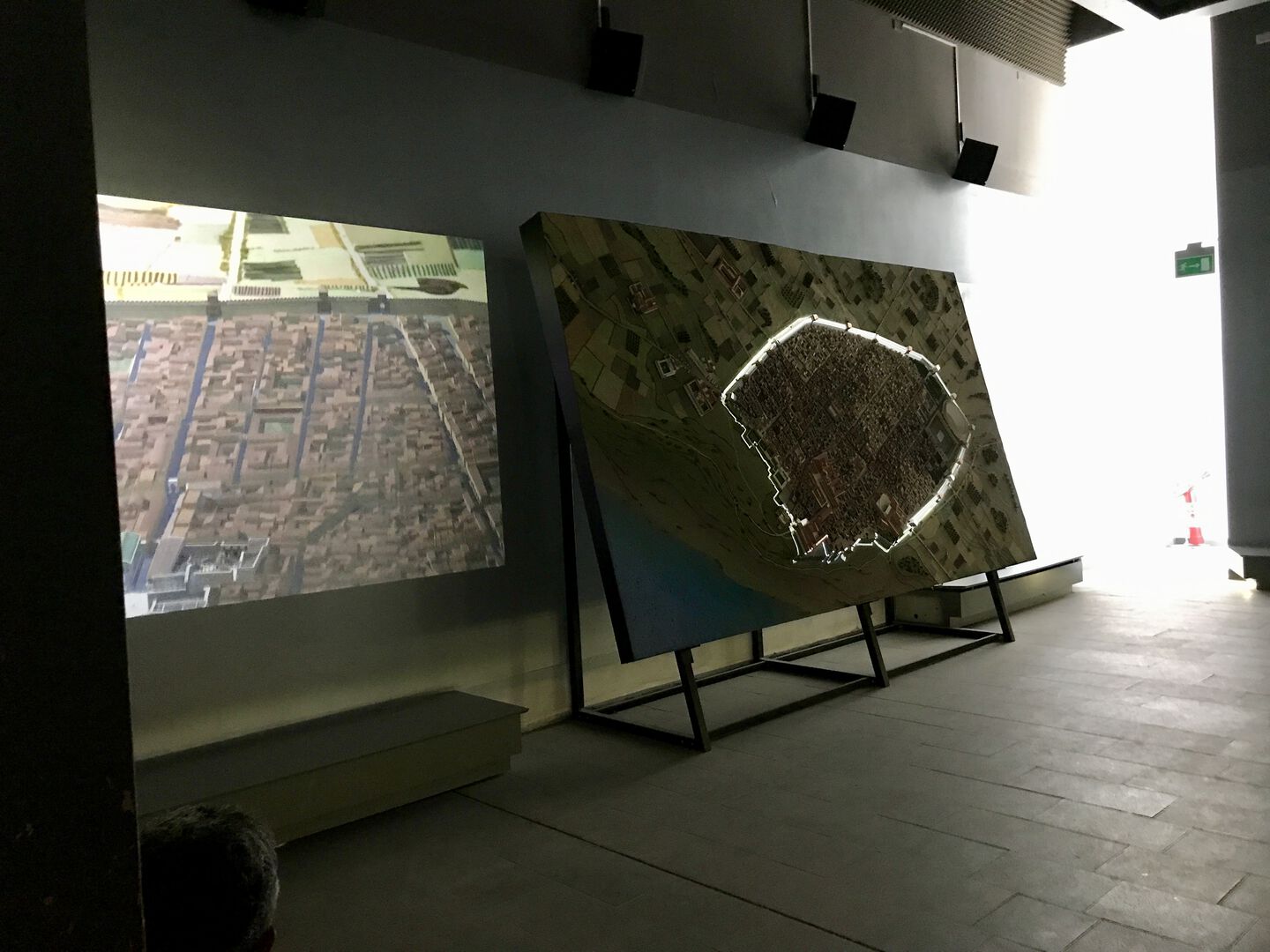
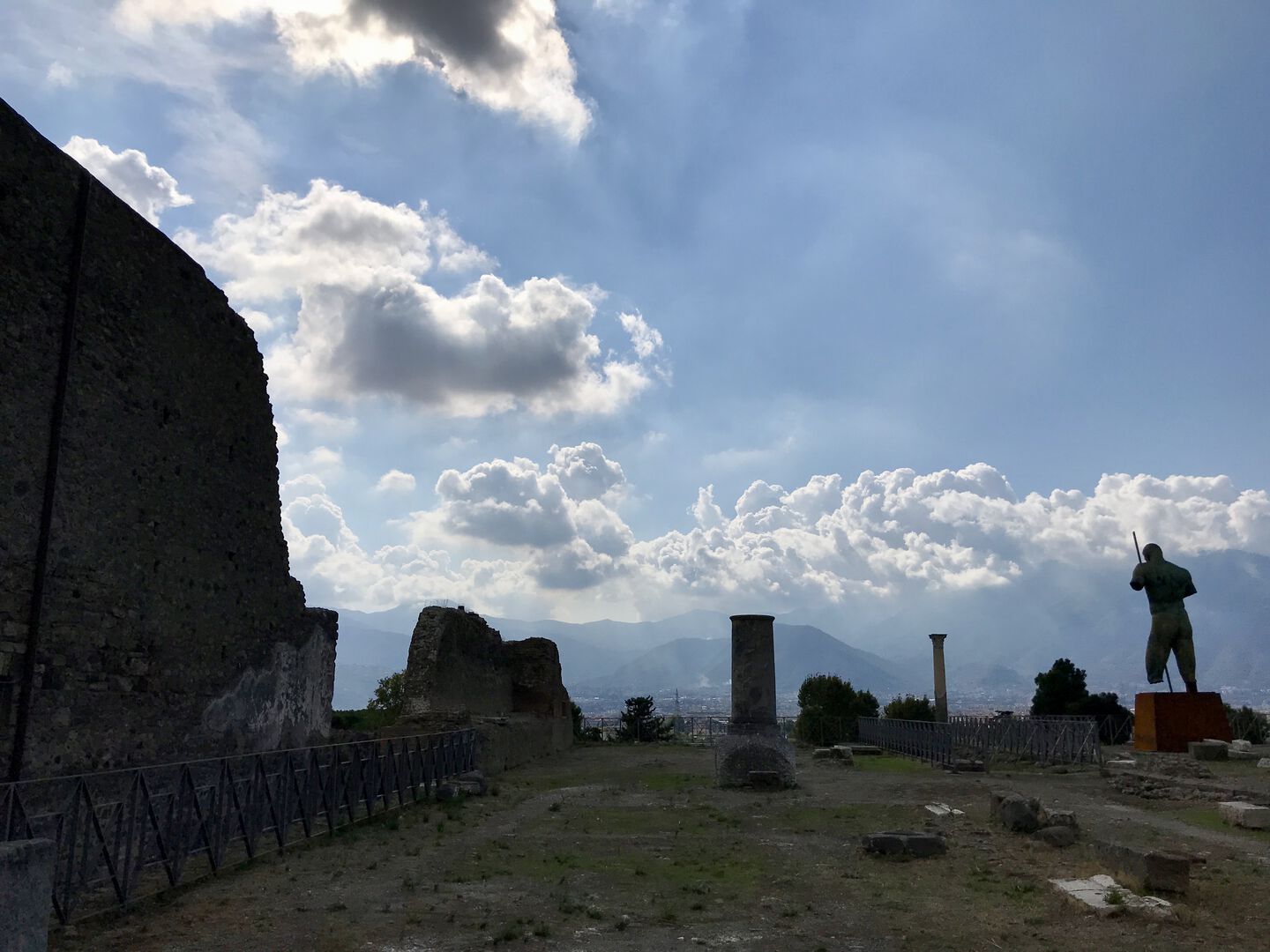
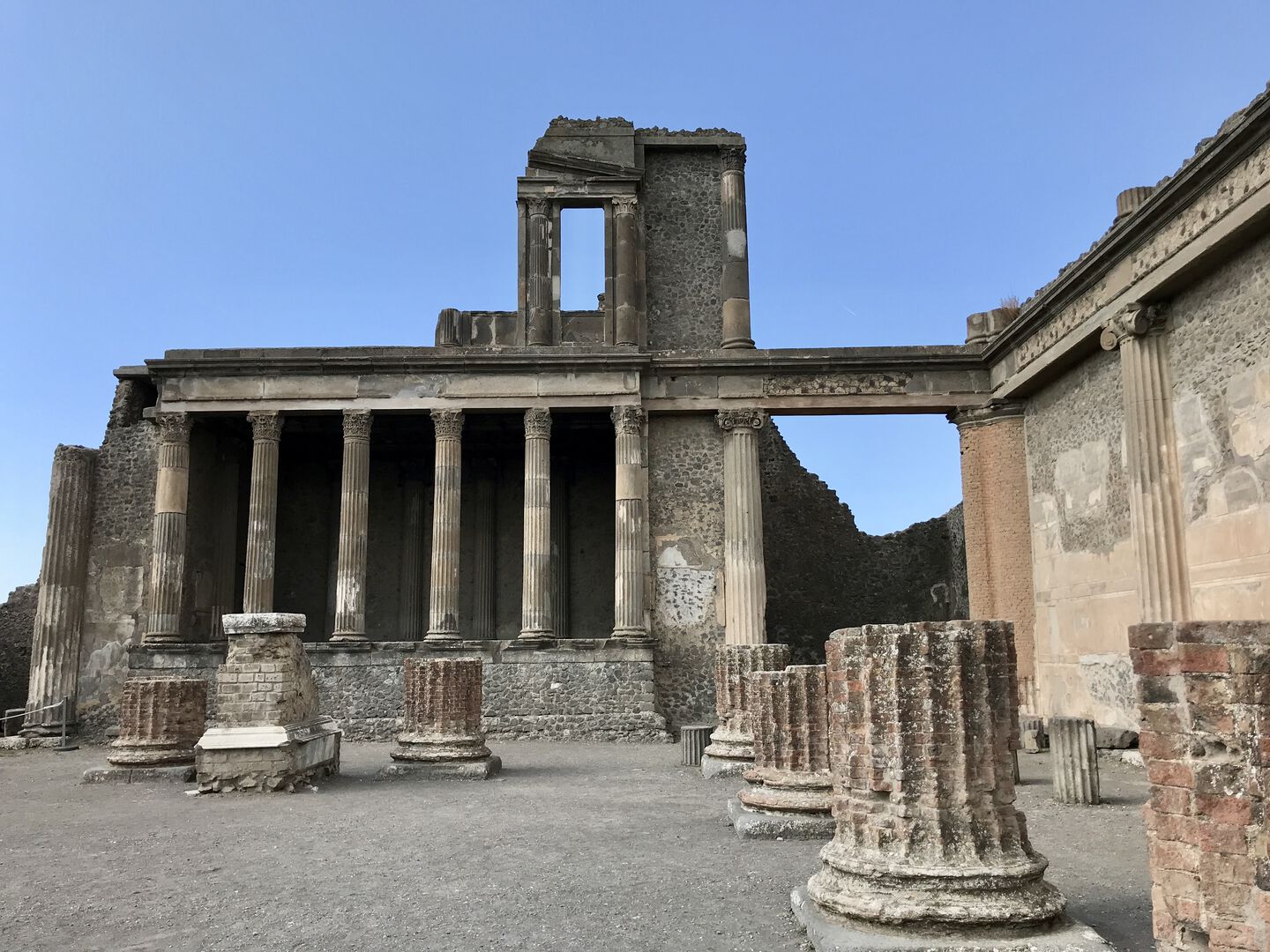
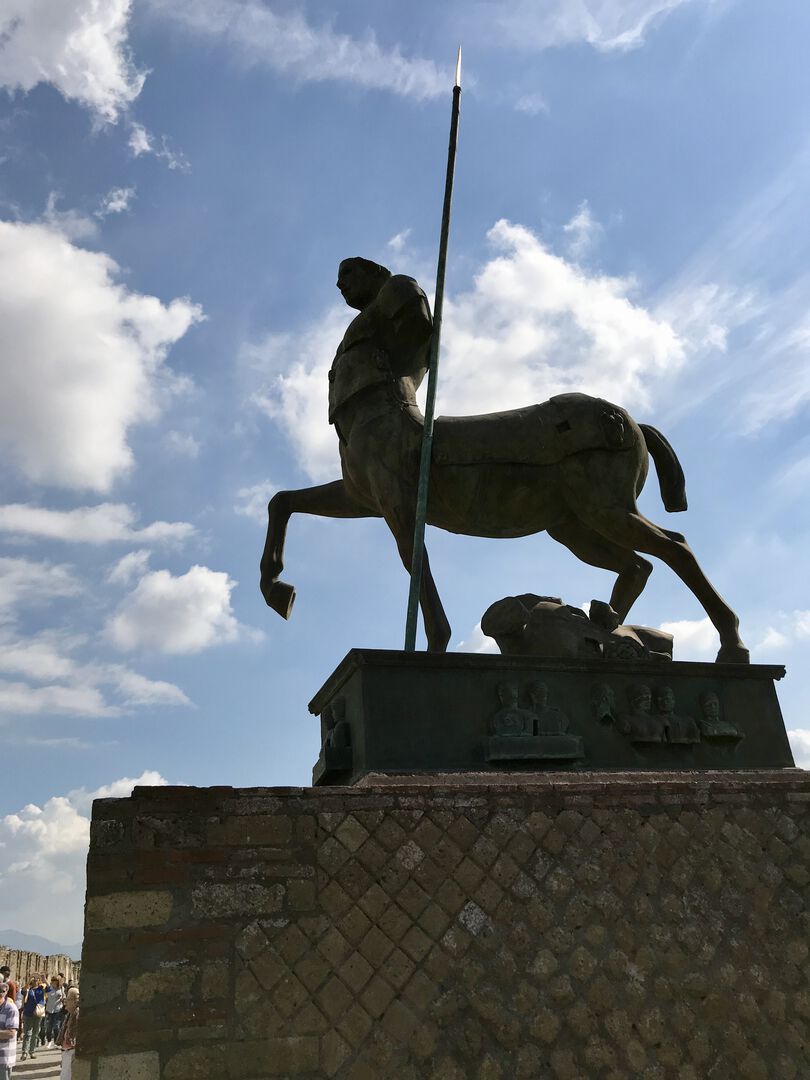
Mount Vesuvius Eruption
Around 1 o’clock in the afternoon, Mount Vesuvius violently erupted, spewing out a column of volcanic material into the atmosphere, and ash and pumice began to fall, covering the entire area. During this period, there were some rescue and escape attempts. In the late evening or earlier the next day, pyroclastic flows began to move down the volcano’s sides. The lights seen on the mountain were explained as fires. People in the vicinity of Misenum fled. The pyroclastic material moved swiftly, at high density and temperature, eradicating anything in its path, burning or suffocating the remaining population and modifying the landscape, including the coastline. At the same time, there were also minor earthquakes and a minor tsunami in the Bay of Naples. By the late evening on the following day, the eruption had ended, leaving only emissions of steam in the atmosphere, lit by the weak sunlight.
The eruption was described in detail by the younger Pliny in a letter to the historian Tacitus.
Broad sheets of flame were lighting up many parts of Vesuvius; their light and brightness were the more vivid for the darkness… It was daylight now elsewhere in the world, but there the darkness was darker and thicker than any night.
Ancient City of Pompeii
The city of Pompeii sustained a substantial amount of ash fall during the eruption, in which people were buried. Due to the ash and lack of air and moisture, the city remained buried for over a thousand years. Finally, in 1594, the first major excavation of Pompeii began, revealing many aspects of Roman life and culture that have been studied ever since.
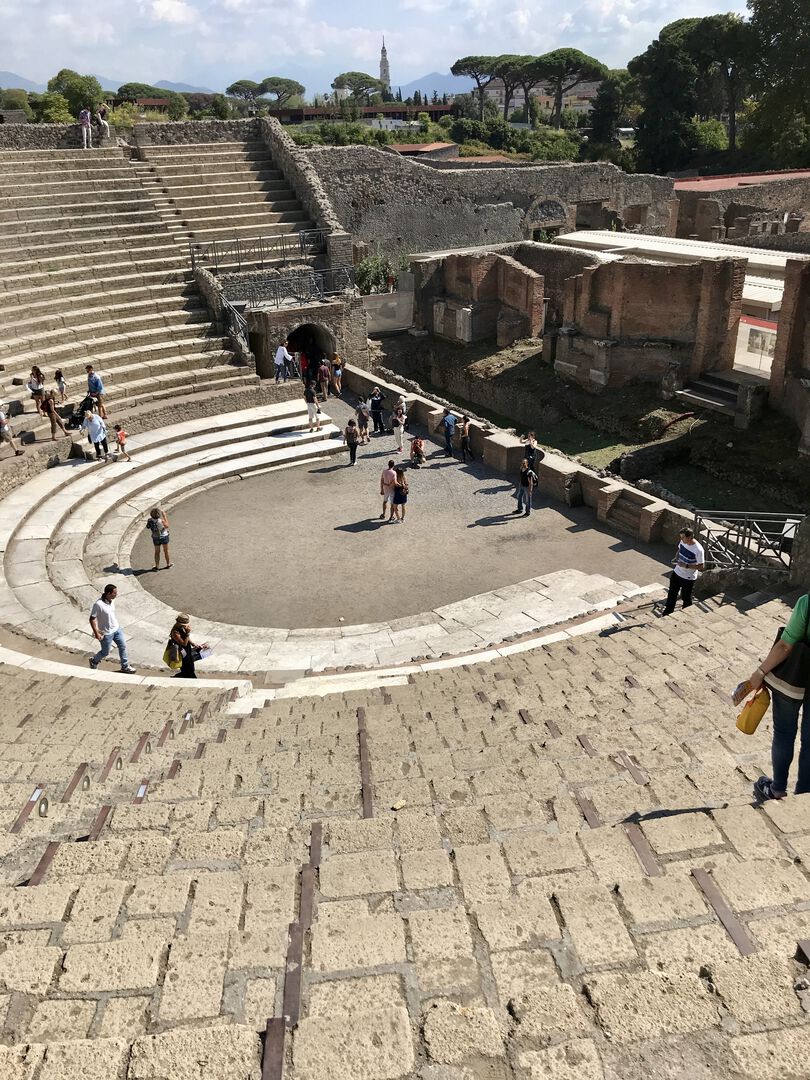
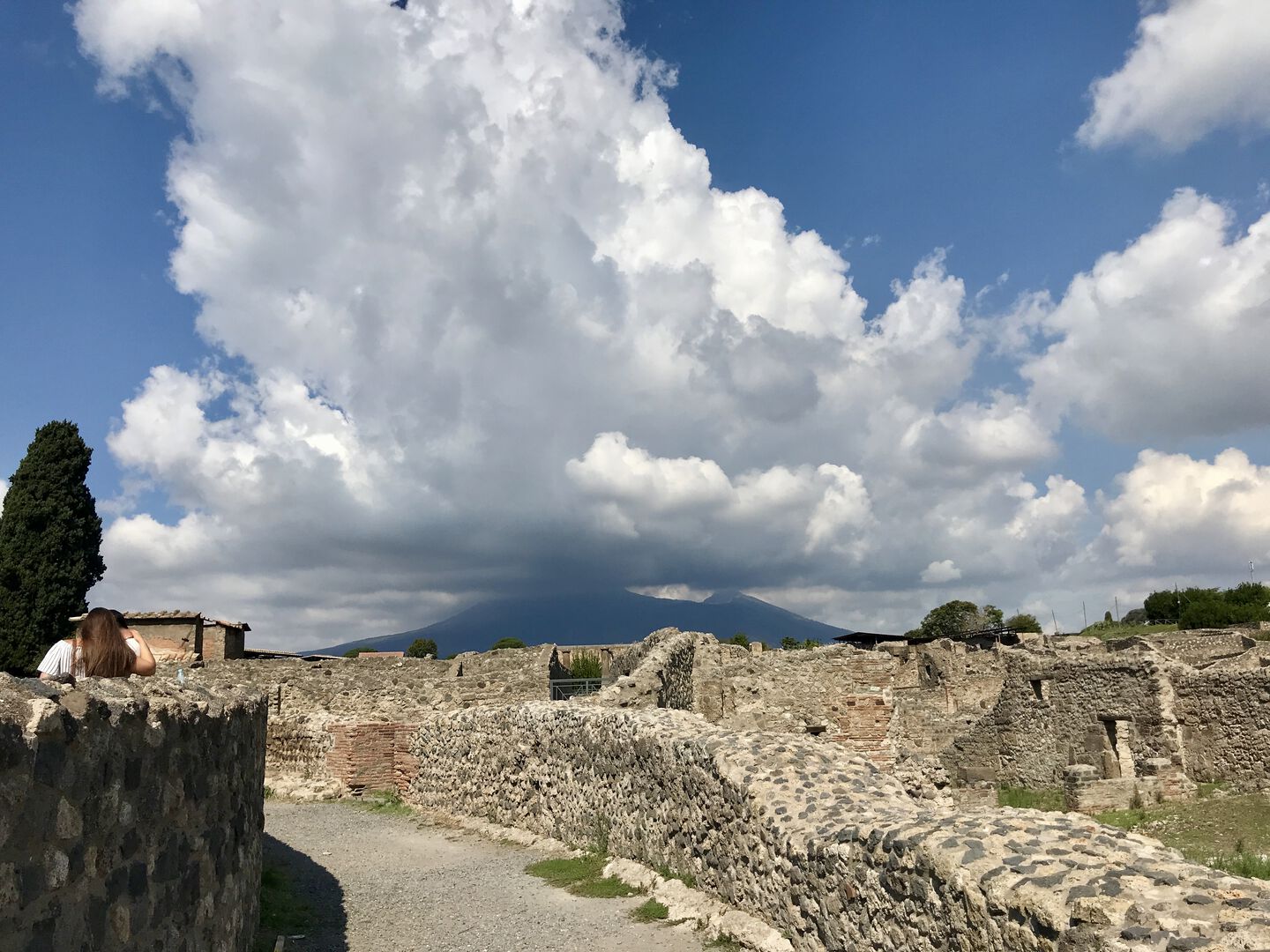
Amphitheatre of Pompeii
The amphitheatre’s construction dates to around the first century AD. It is one of the earliest permanent stone amphitheatres built in Rome and is thought to have been built in a natural hillside. It could hold approximately 5,000 spectators.
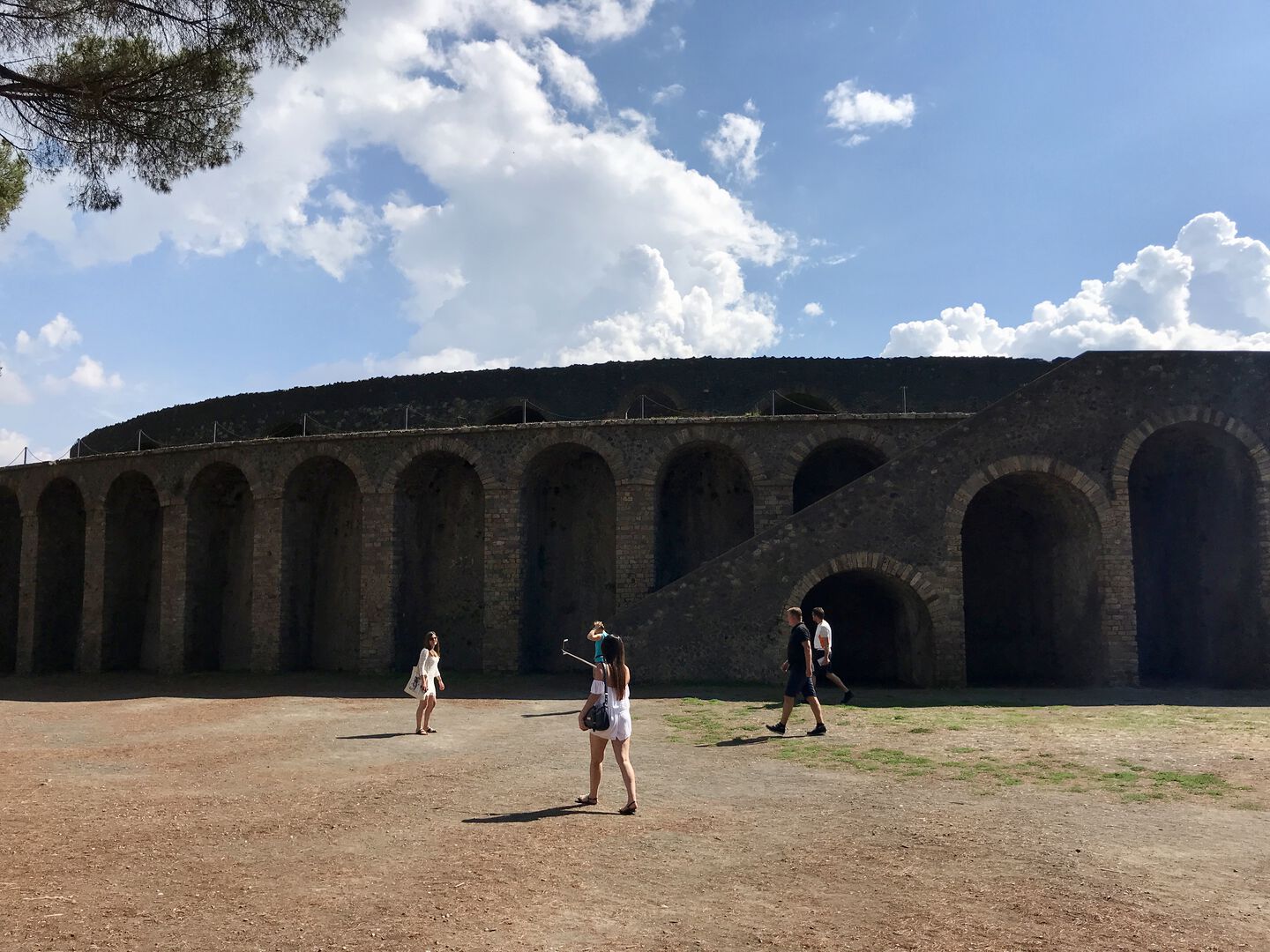
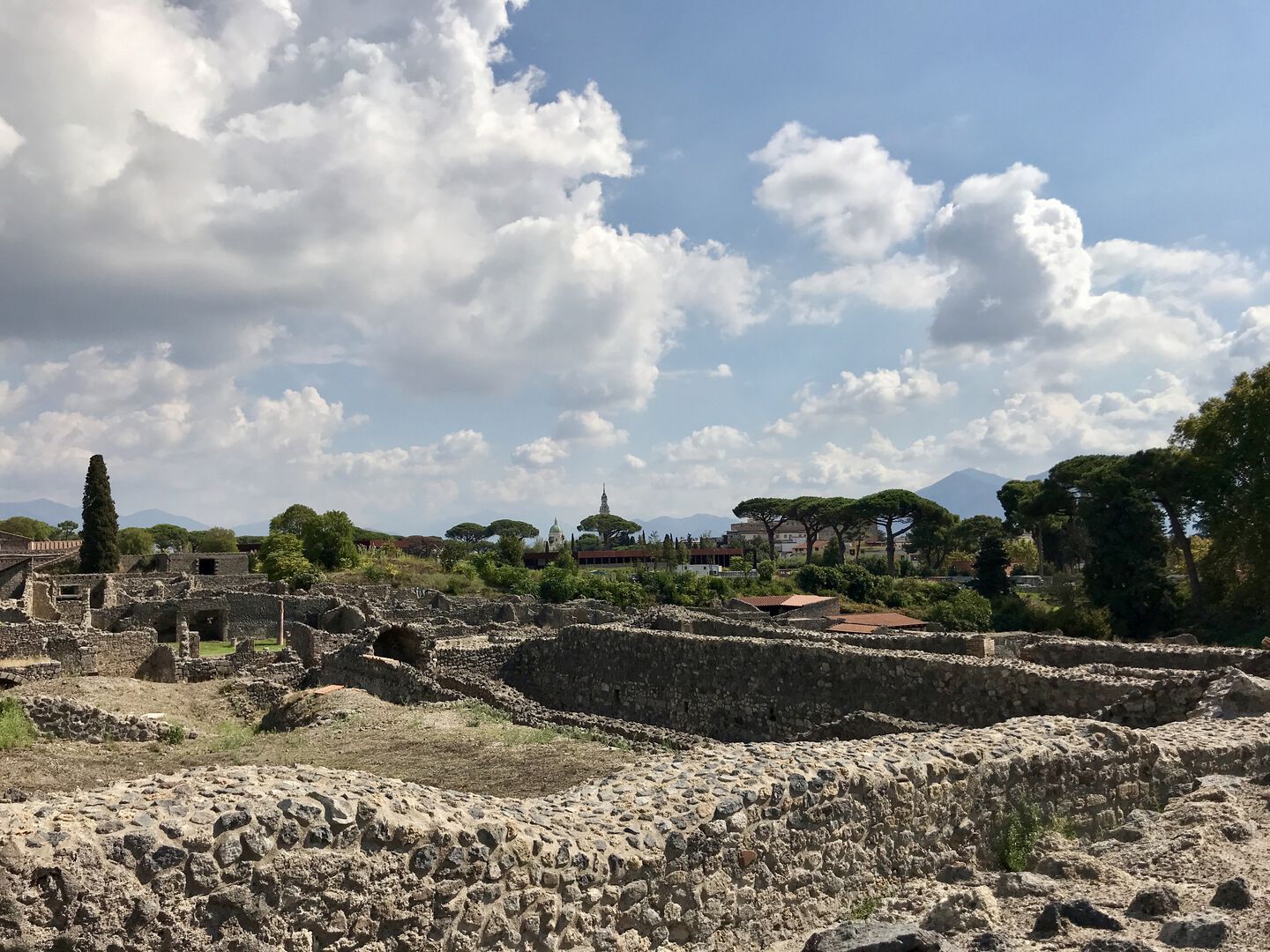

Mount Vesuvius
The eruption of Mount Vesuvius in AD 79 destroyed the ancient Roman cities of Pompeii, Herculaneum, Oplontis, and Stabiae and several other settlements. The thermal energy released by the eruption was one hundred thousand times that of the Hiroshima and Nagasaki atomic bombs combined.
Mount Vesuvius has erupted several times since, making it the only volcano on the European mainland to have erupted within the last hundred years. Today, Mount Vesuvius is considered one of the most dangerous volcanoes in the world due to its proximity to 3 million people living close enough to be affected by an eruption, with 600,000 of them living in high-risk areas. It is the most densely populated volcanic region in the world and tends to have Plinian-style explosive eruptions.
The formation of Mount Vesuvius is due to the collision of two tectonic plates, the African Plate and the Eurasian Plate. The former is subducting beneath the latter, going deep into the earth. When the water-saturated sediments of the oceanic African Plate are pushed deeper into hotter regions of the Earth, the water boils, lowering the melting point of the overlying mantle enough to partially melt the rock. Since magma is less dense than the surrounding solid rock, it is forced upward. Finding a weak spot in the Earth’s surface, the magma breaches it, thus forming a volcano.
The area around Mount Vesuvius was officially declared a national park on June 5, 1995. The summit of Mount Vesuvius is open to tourists, and there is a small road network around the volcano maintained by the park authorities. The area within 200 meters (660 feet) of the summit (as measured vertically) can be accessed by road, but afterward, only by foot. There is a spiral path leading from the road to the volcano’s crater.
I used to think it was just a small hill, but in reality, it’s quite large, with an elevation of about 1km.
As mentioned above, we took a bus to the top of the mountain, and the final ascent had to be done on foot. It’s best to wear tight shoes, or else they will be covered in volcanic ash.
The interior of the crater doesn’t have lava but there are areas emitting smoke.
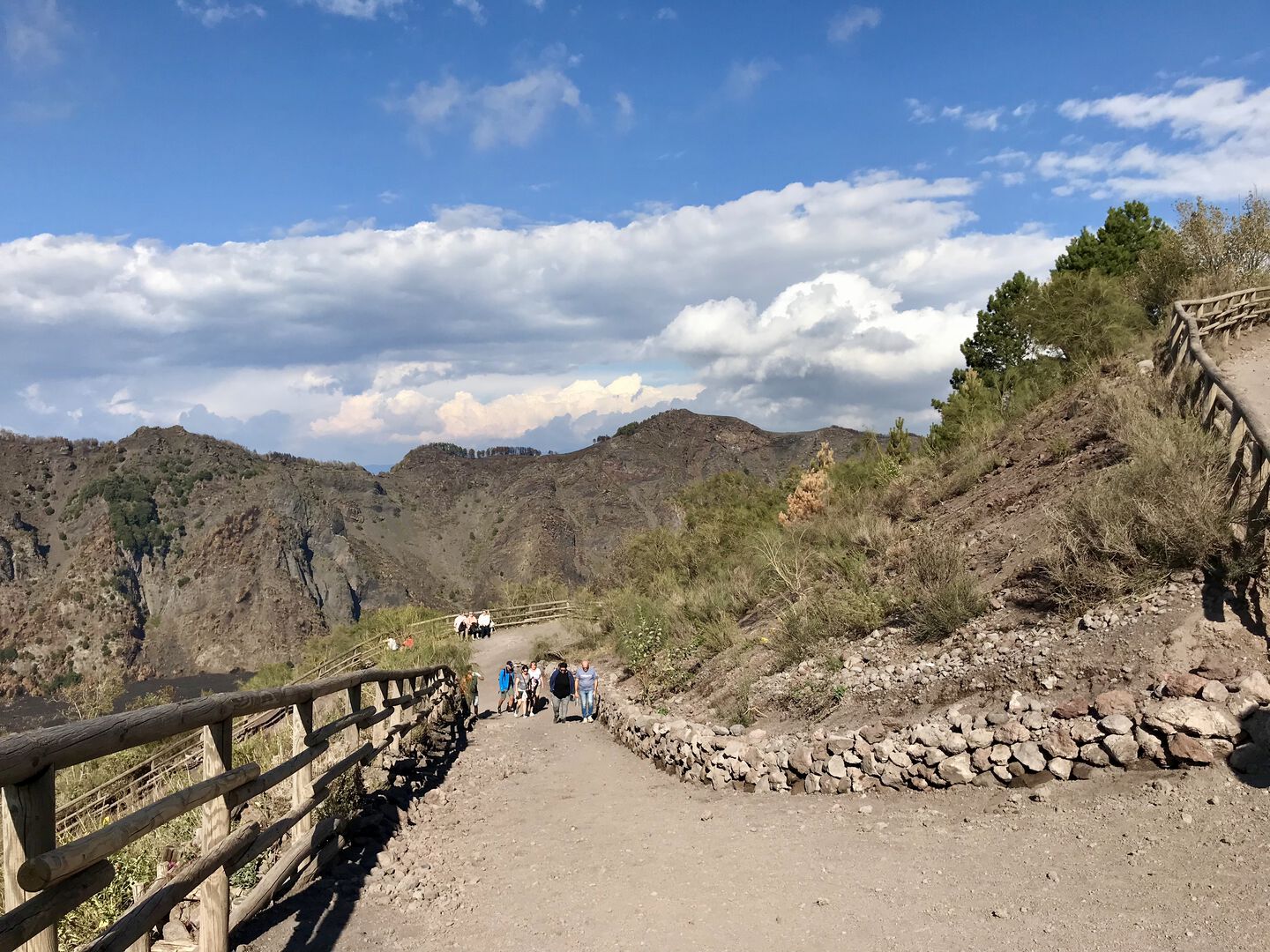
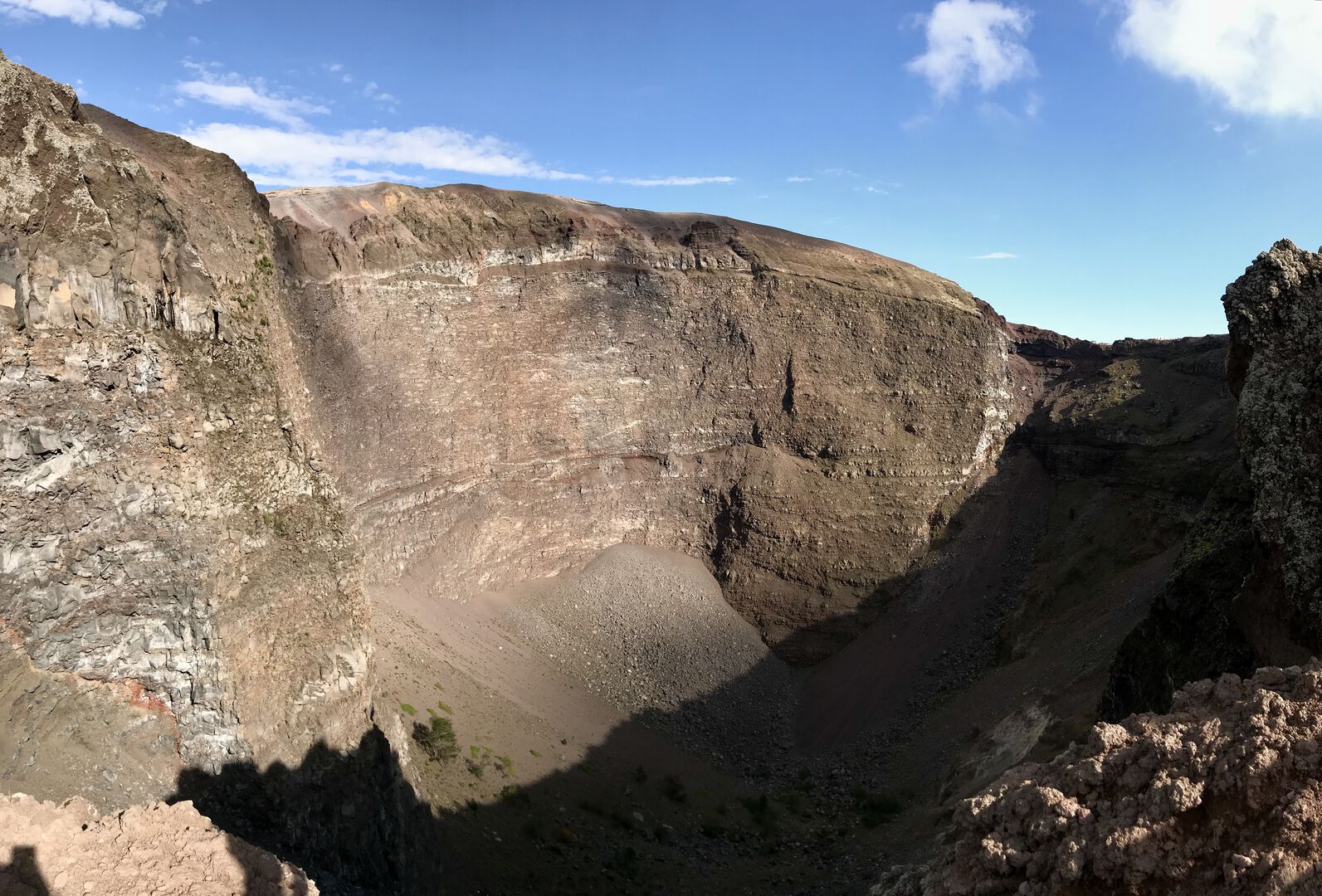
Some clouds seemed to be holding something neatly beneath them, while others would occasionally blow towards us, reminding me of the scene in Arrival where clouds float over the mountains. This time we were really standing in the clouds.
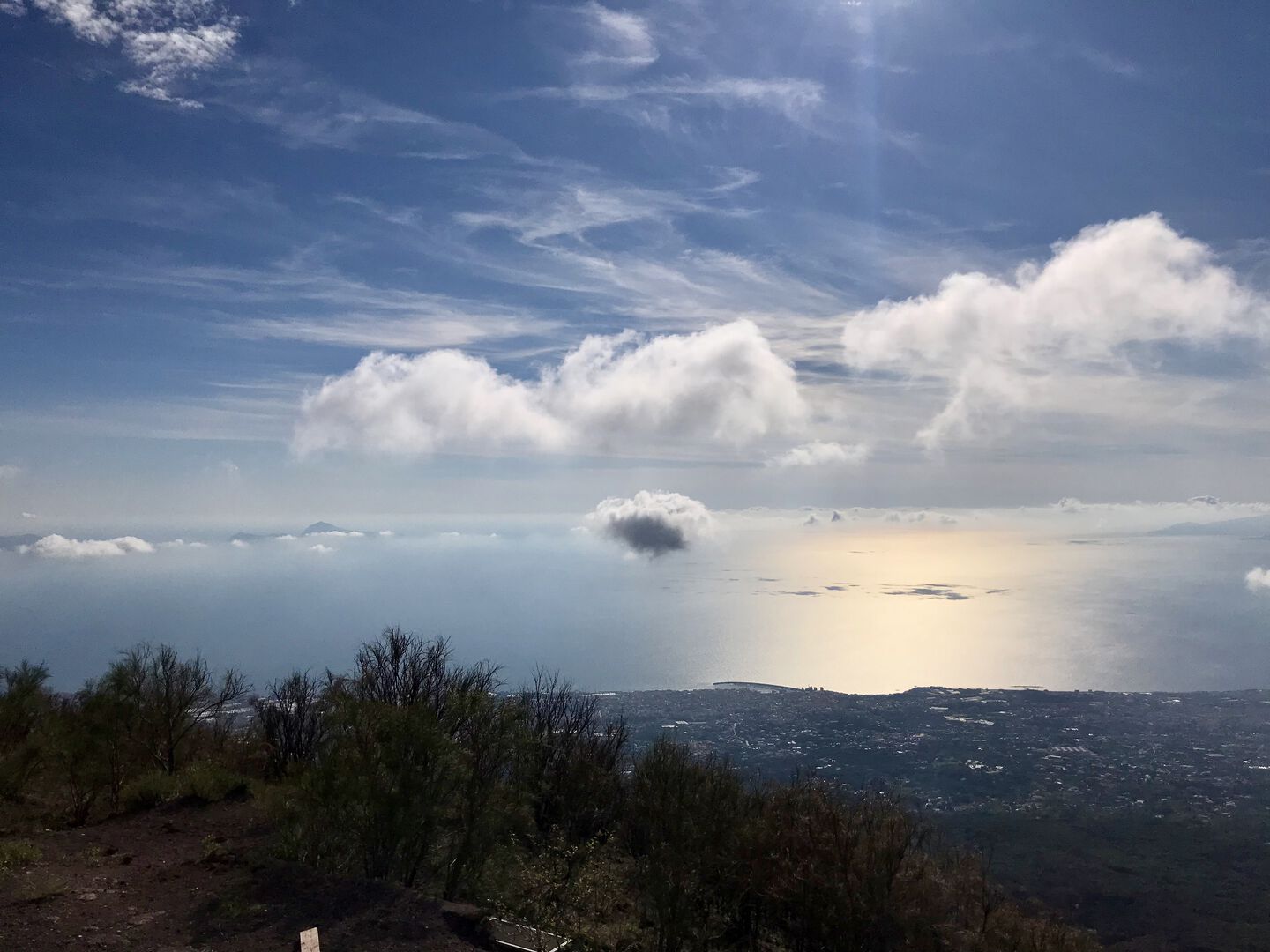
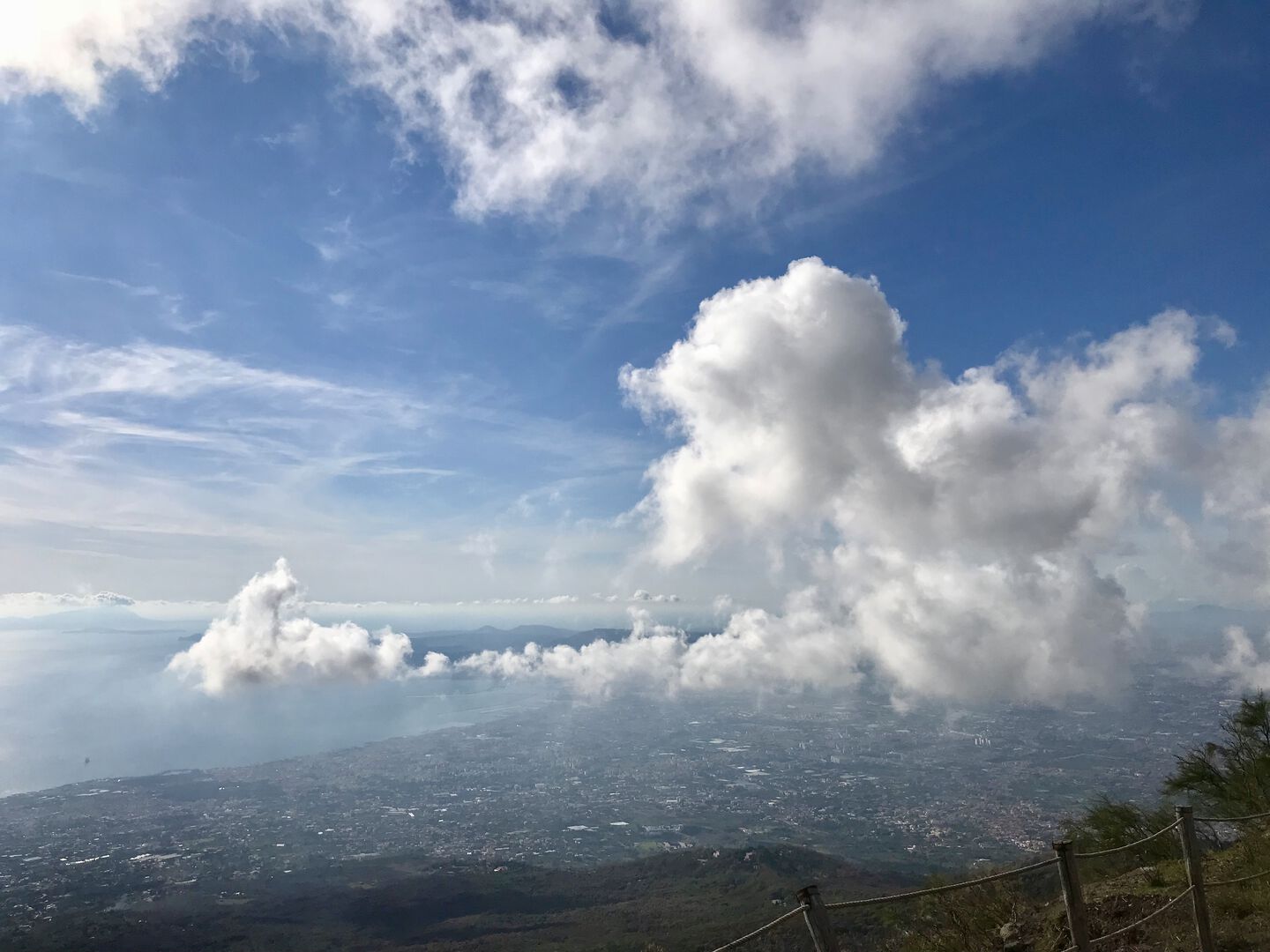
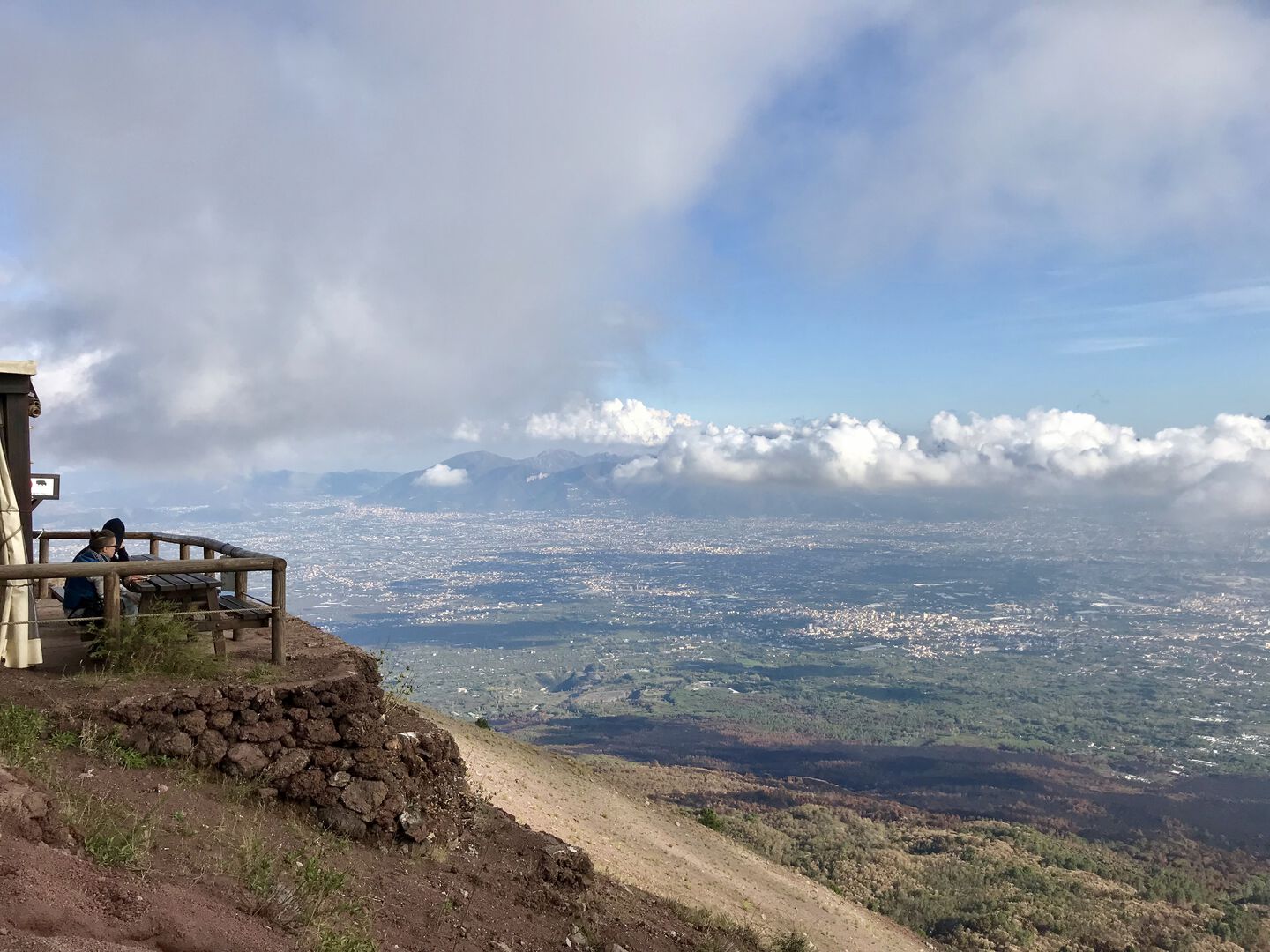
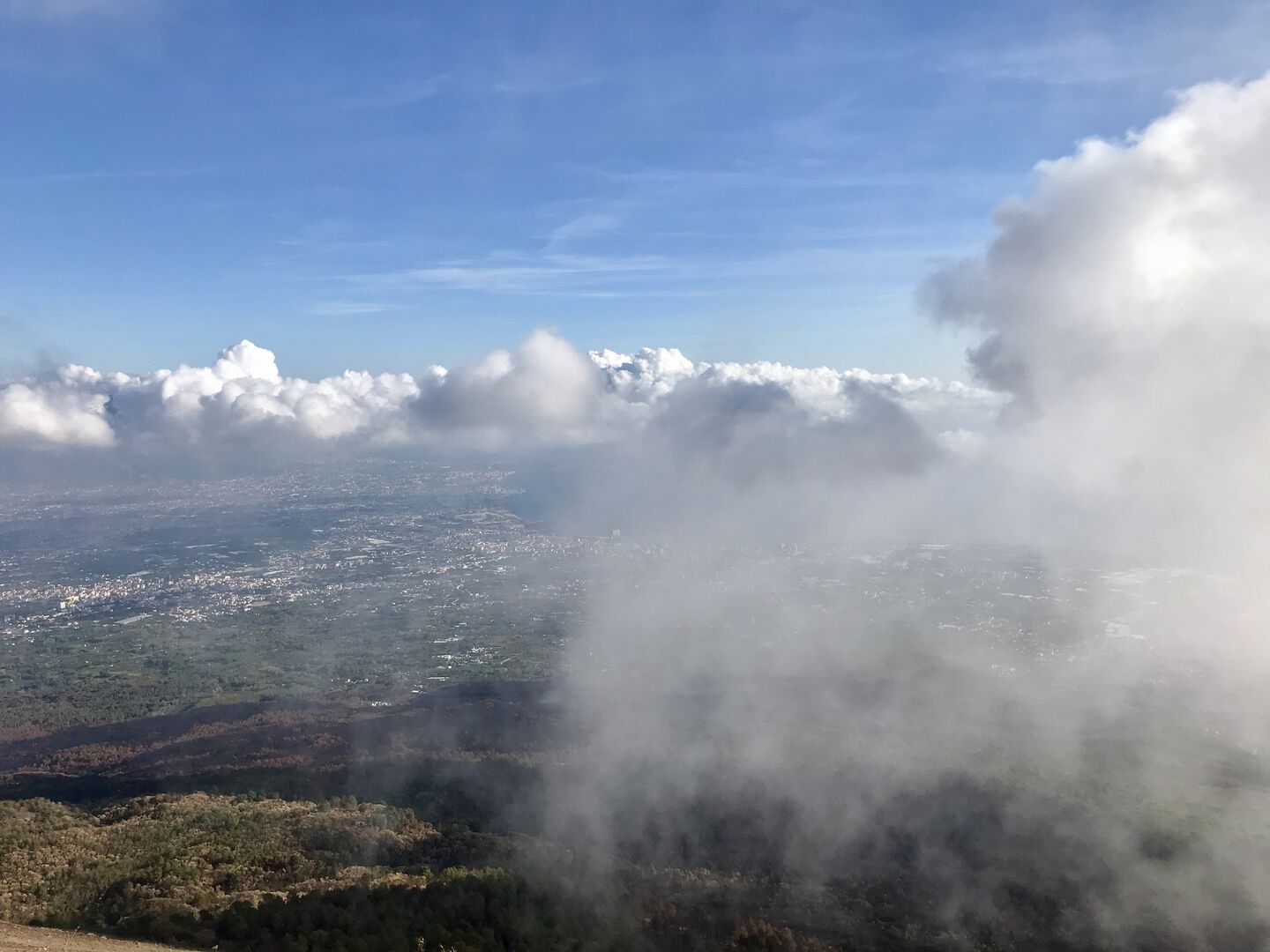
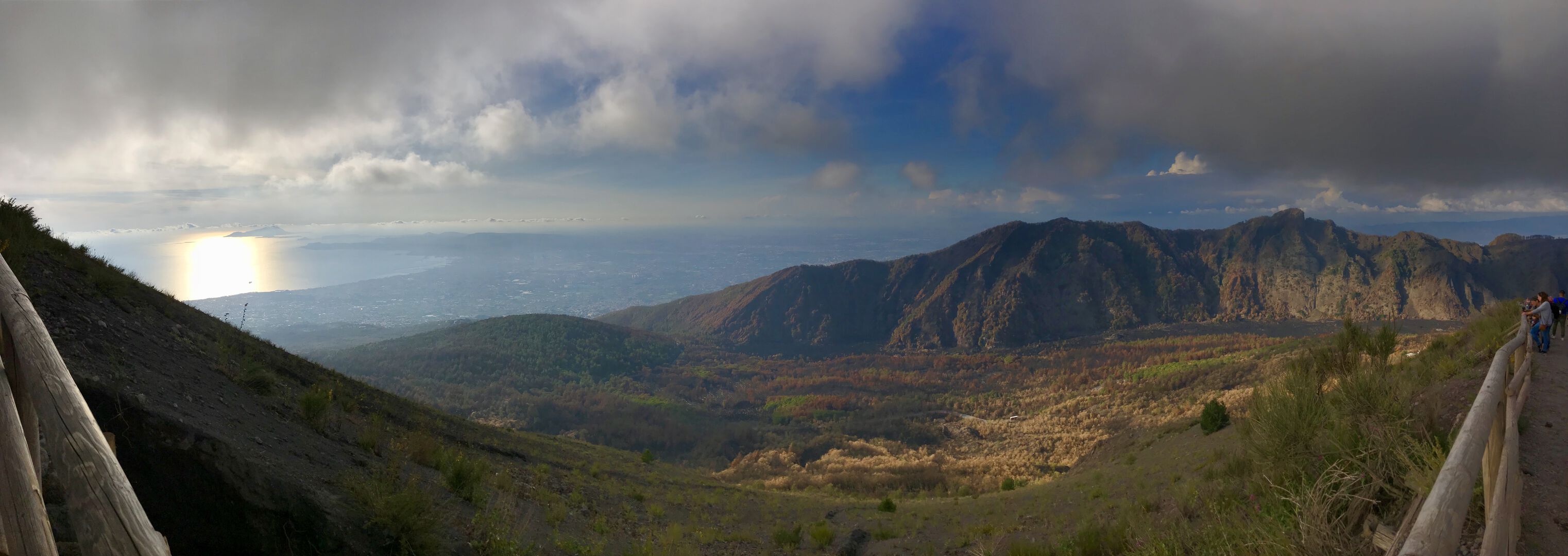
Positano
Positano is heaven on earth. When you are here, it doesn’t feel real, but when you leave, it becomes vividly alive.
The houses built on the hills are quite unique and perfect for parkour. When I used to play Assassin’s Creed, Ezio would run on the roof in Italy.

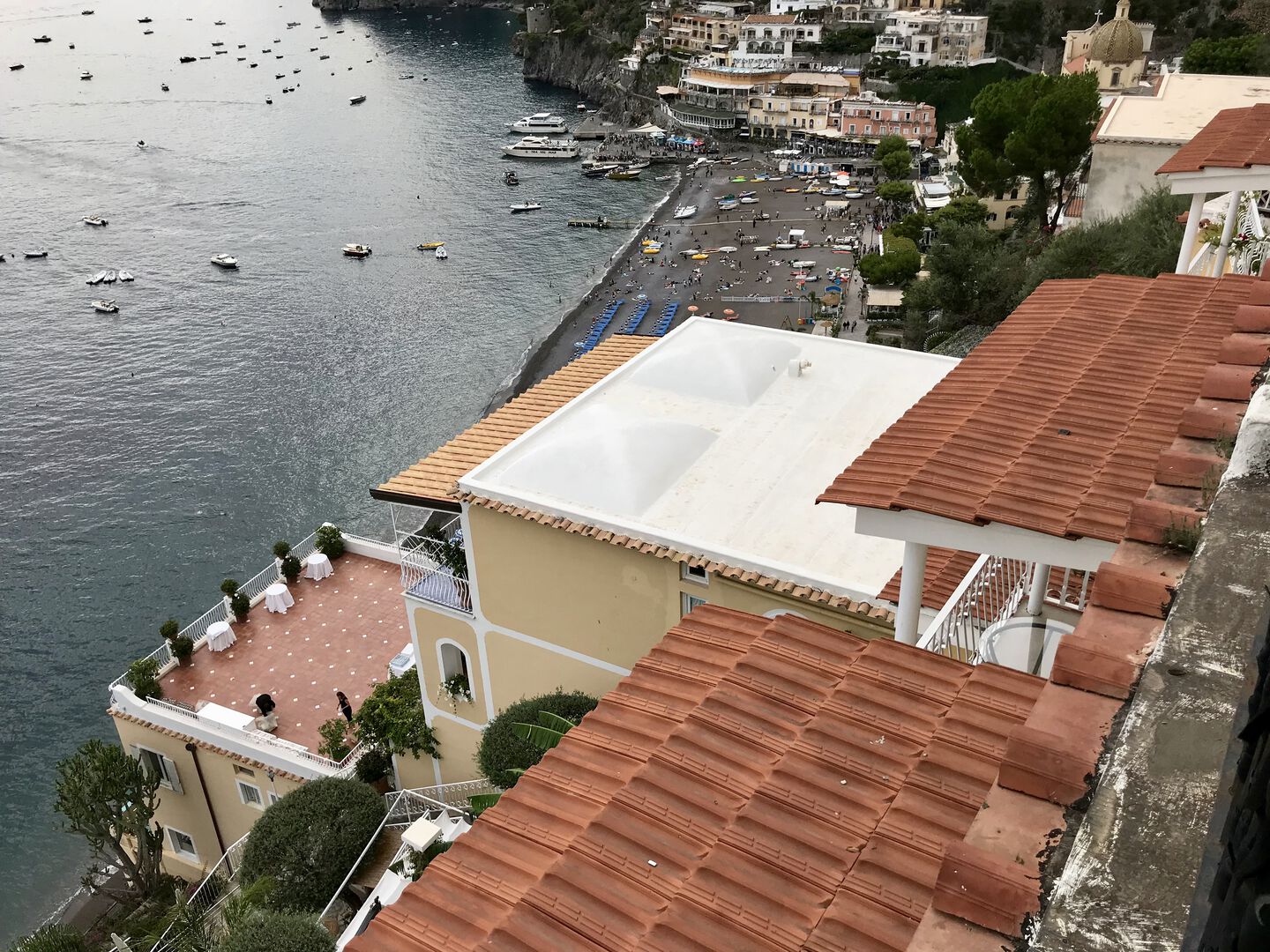
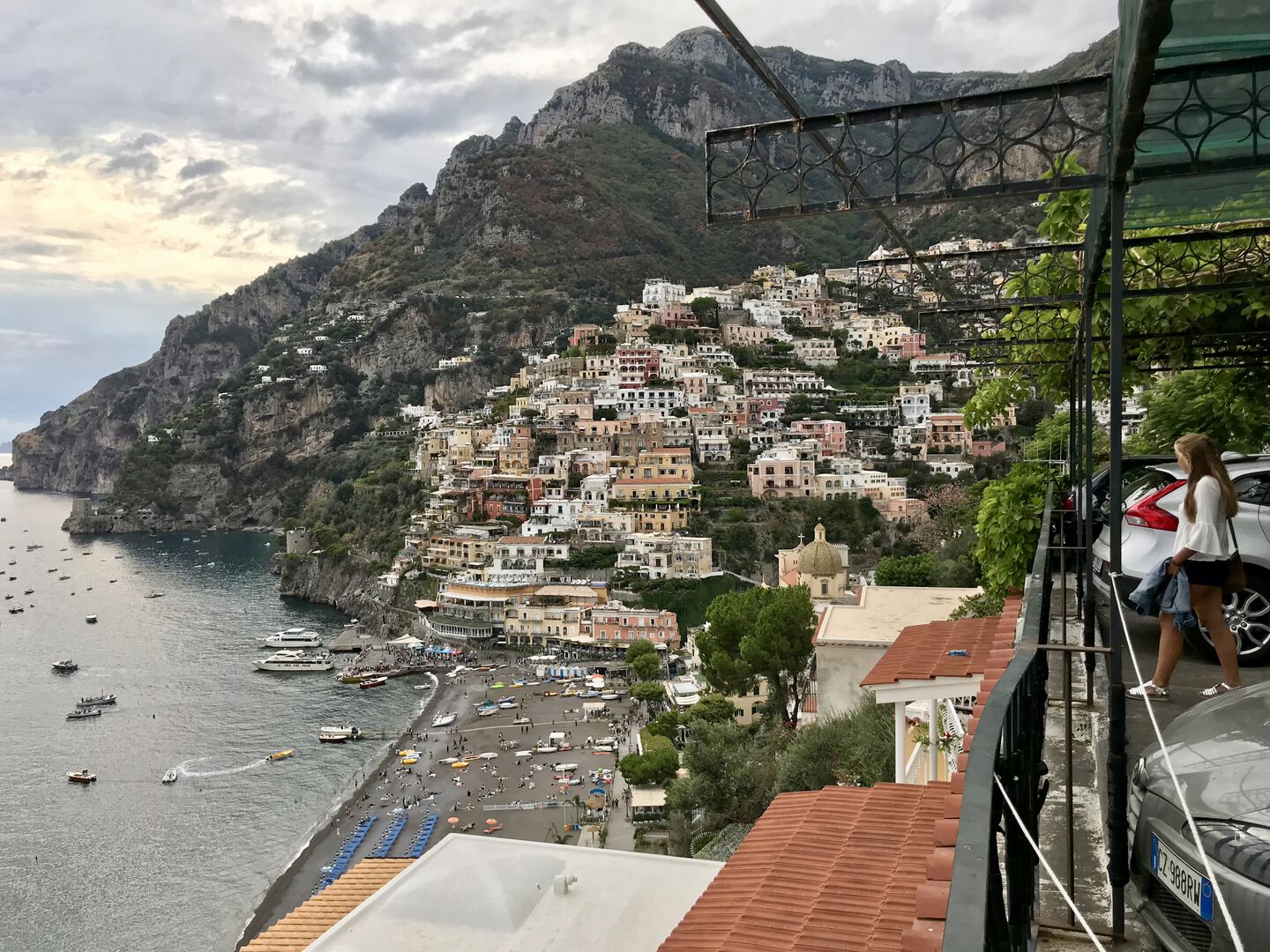
There are small boats at the seaside that you can take out onto the water.
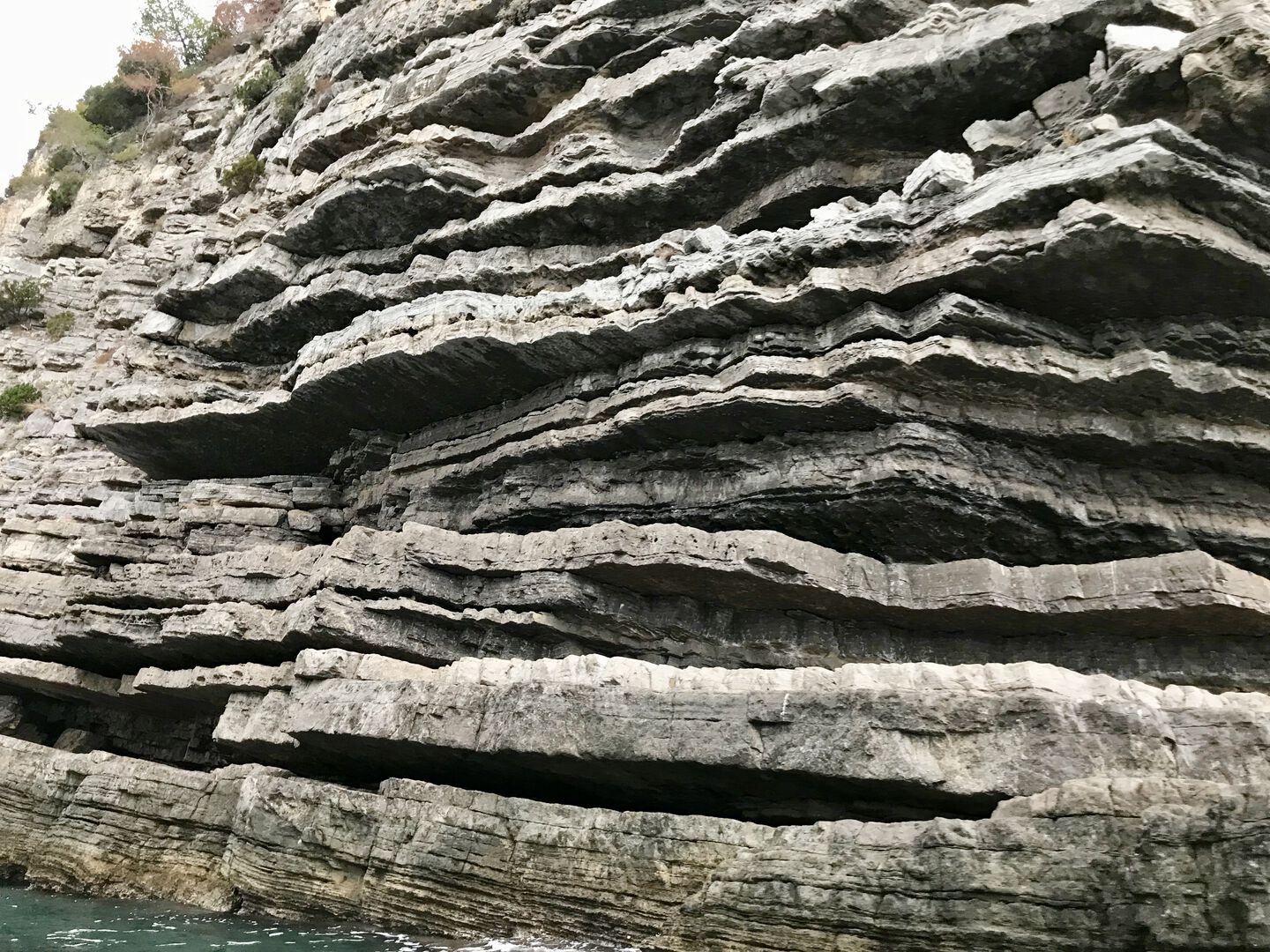
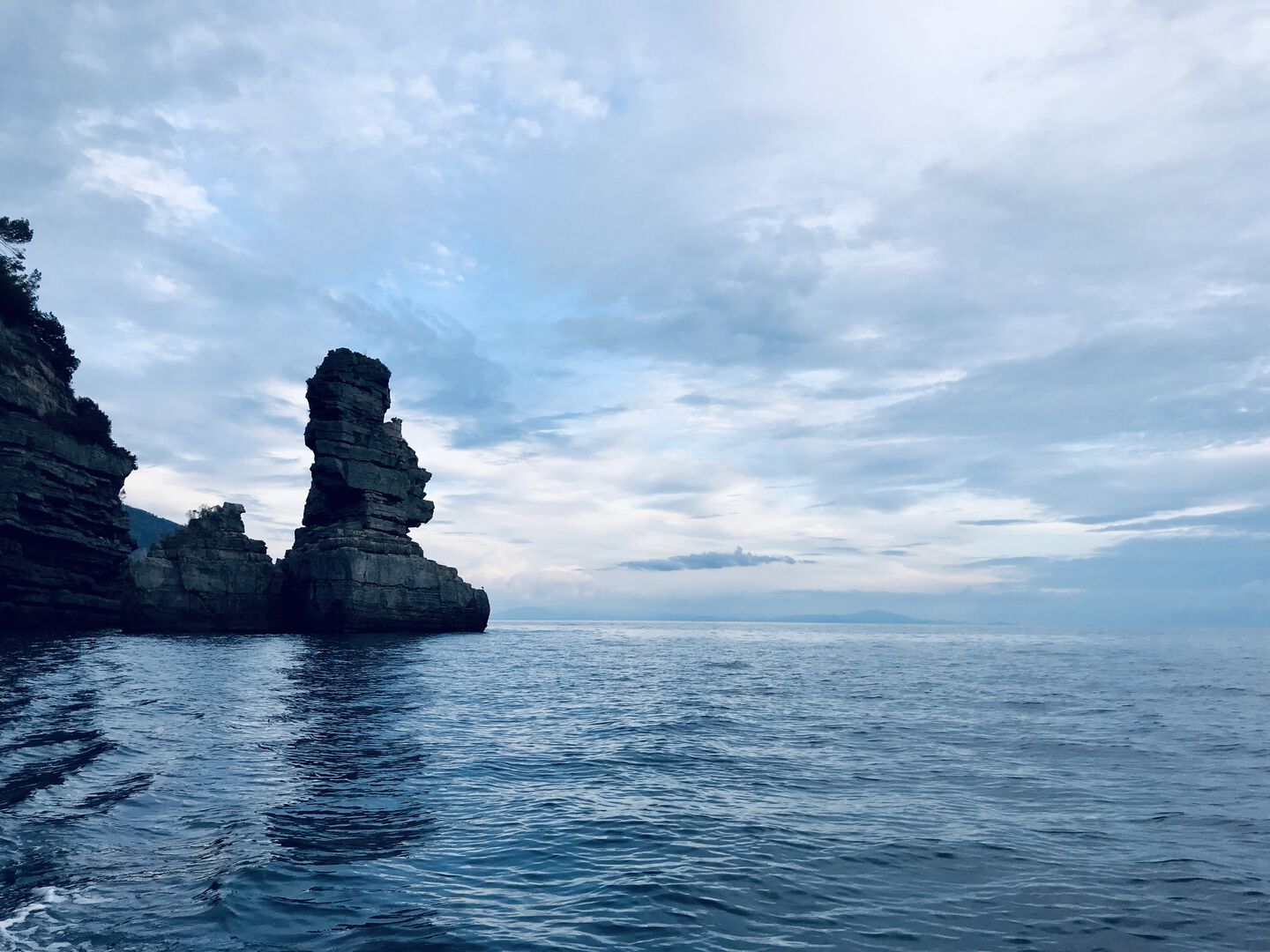
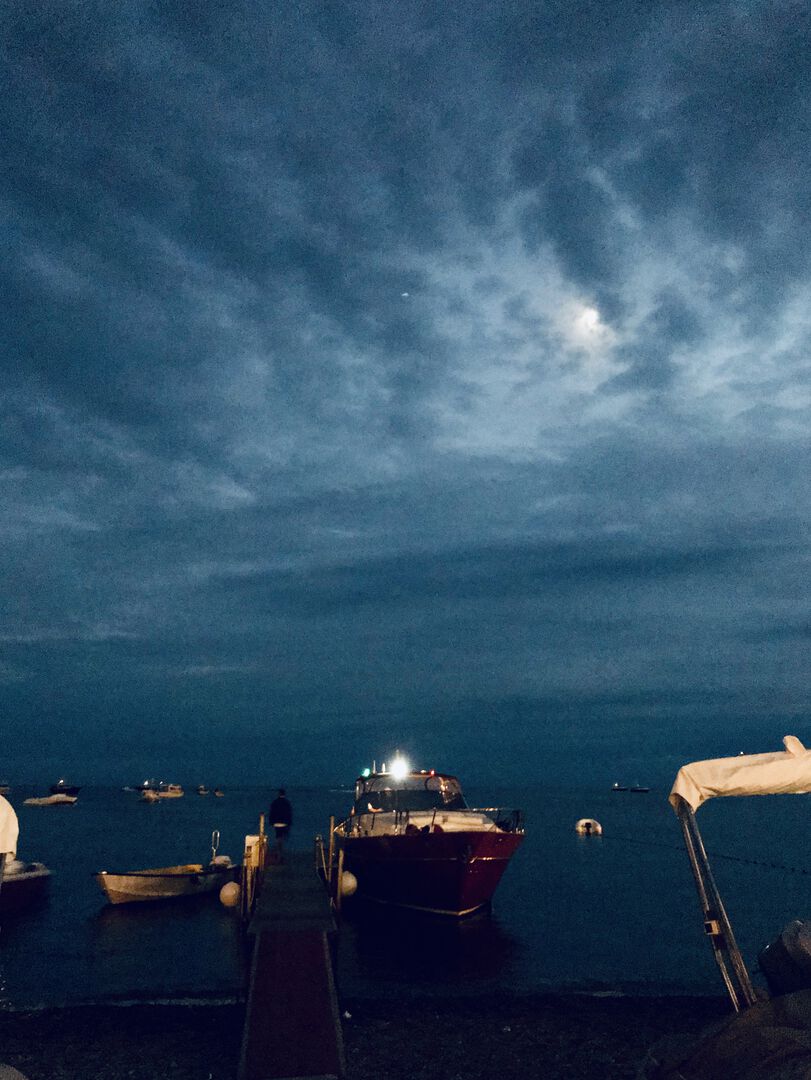
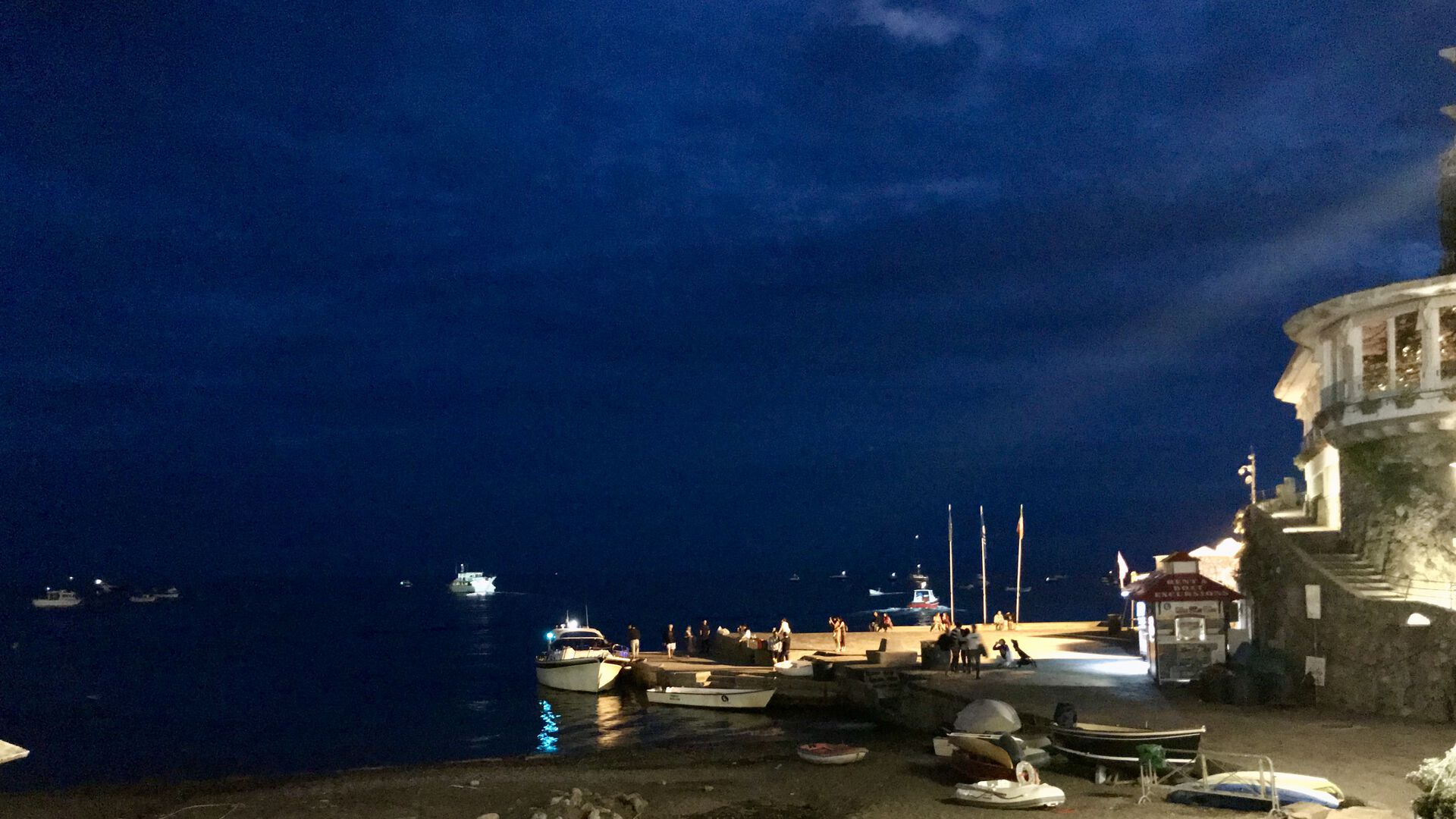
When we returned, it was already evening. The lights were shining, creating a scene reminiscent of a movie.
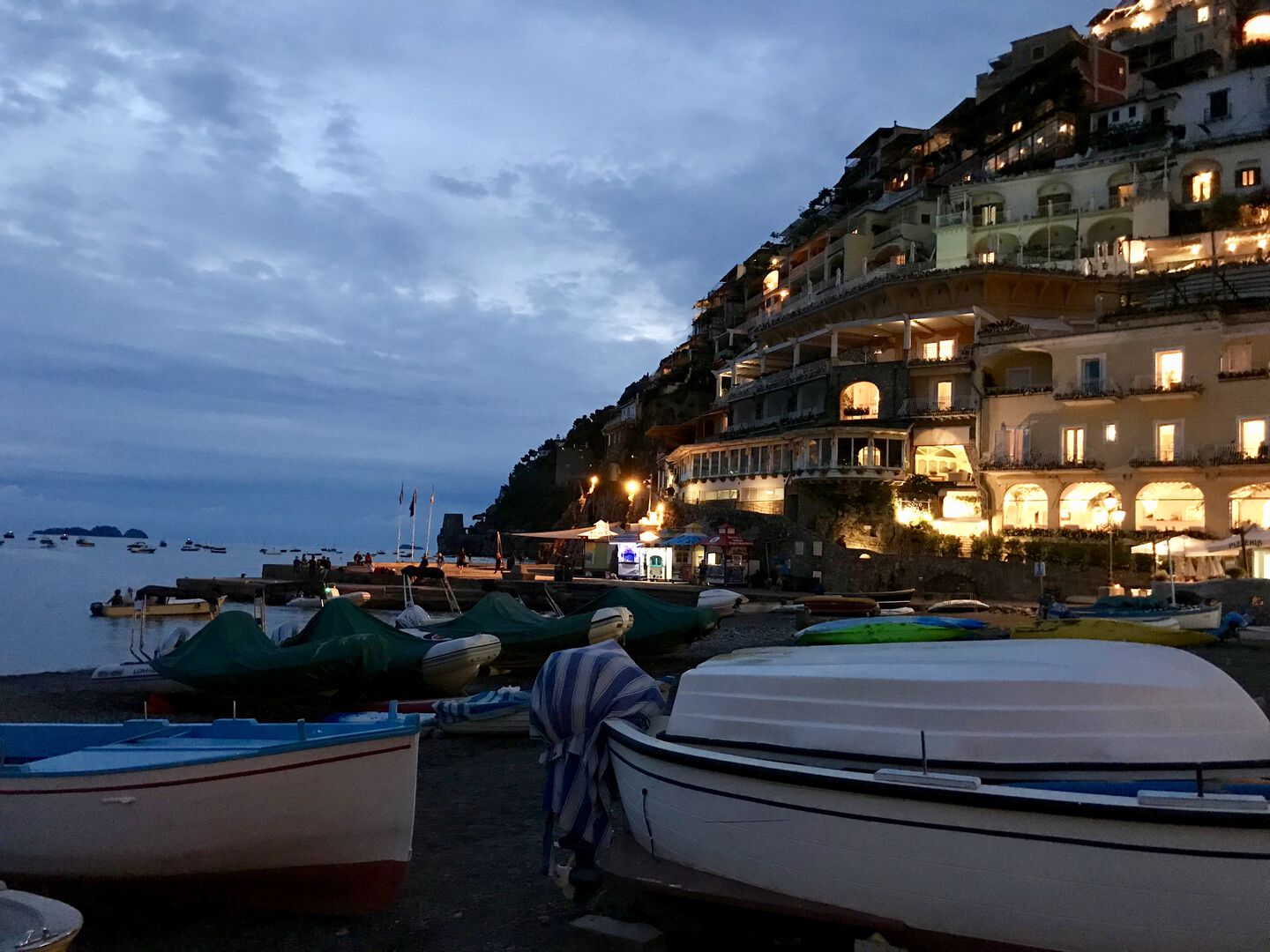
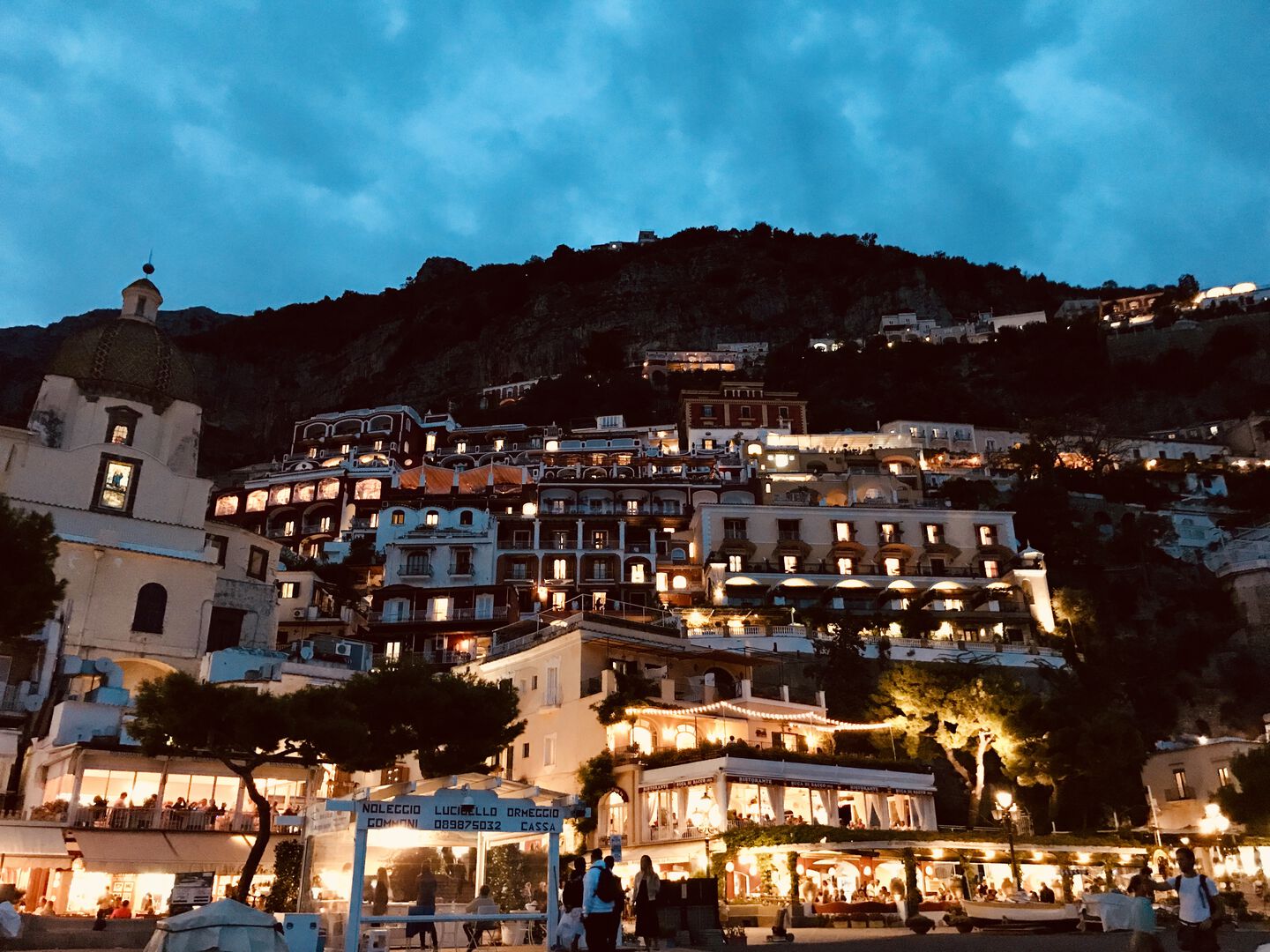

The Tyndall effect is the scattering of light by colloidal particles or very fine particles suspended in the air or water. Similar to Rayleigh scattering, the intensity of the scattered light is inversely proportional to the fourth power of the wavelength, so blue light is scattered more than red light.
Like The Lord of the Rings
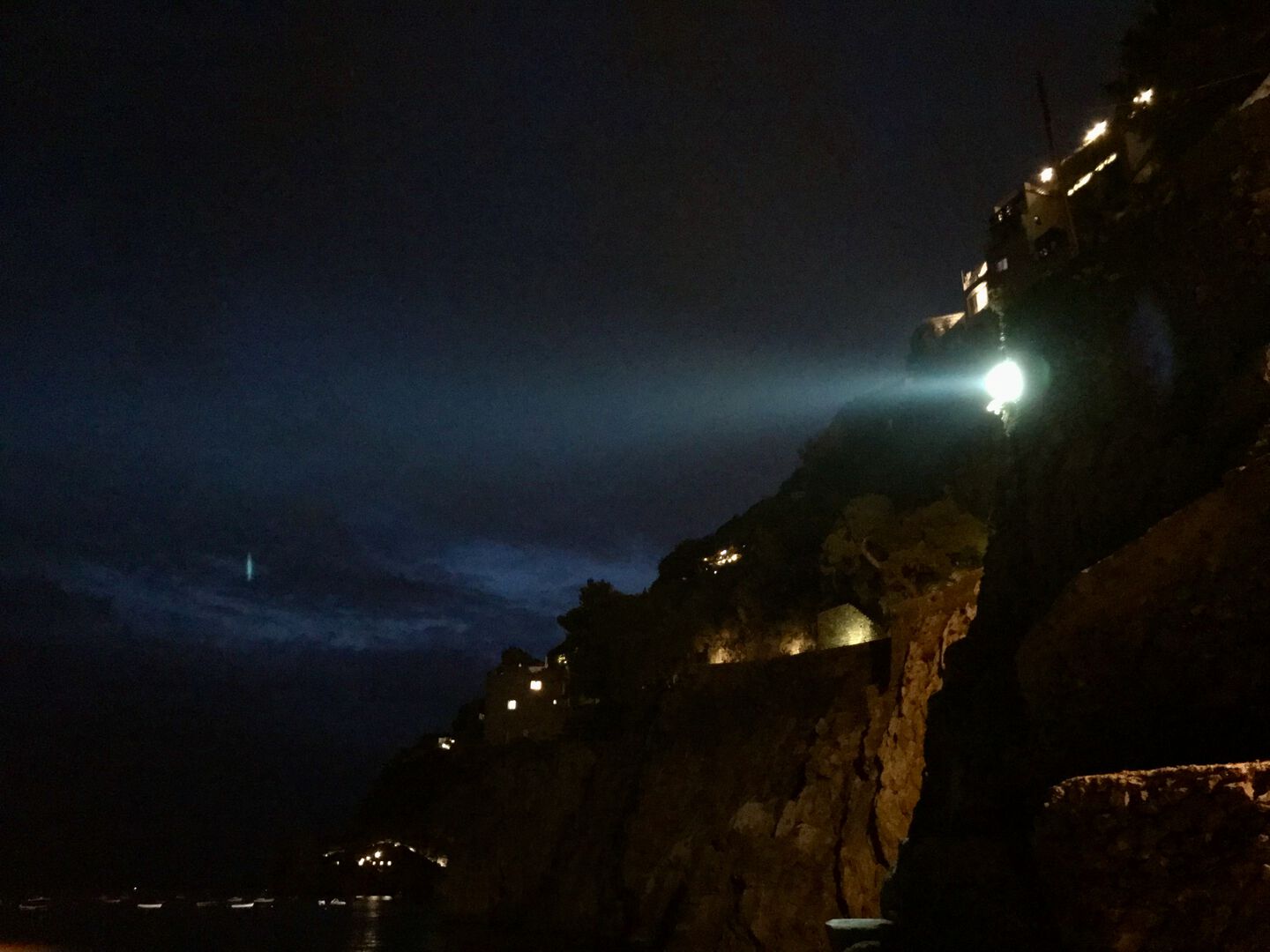
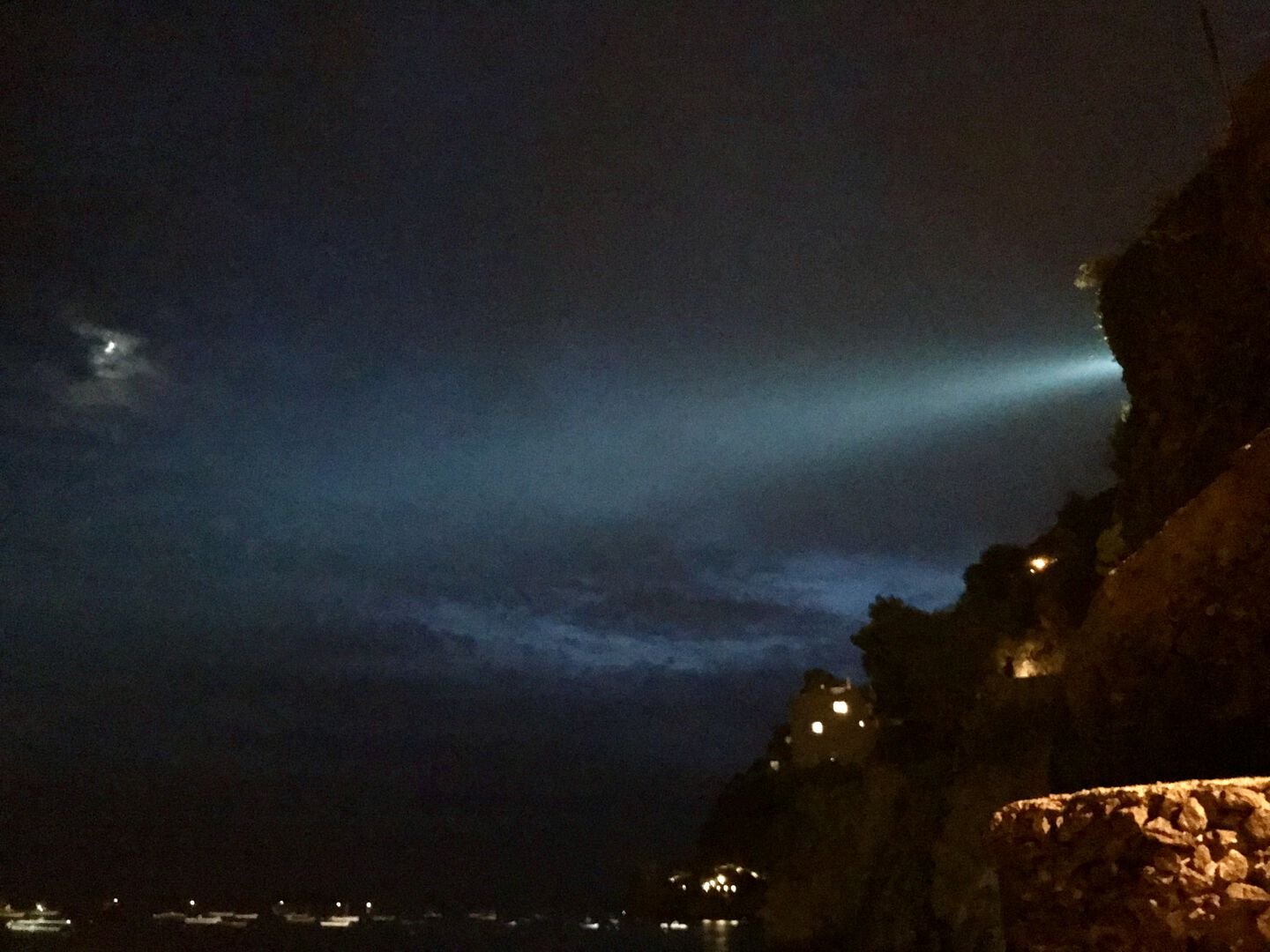
Capri Island
In addition to being a paradise for writers and artists, Capri is also a relative safe haven for foreign gay men, allowing them to live more openly; a small portion of them are attracted to living there and somewhat overlapping with the aforementioned creative types.
The boat trip around the island takes about an hour. Unfortunately, my travel partner had to leave early to catch a flight, so we only went halfway around the island.
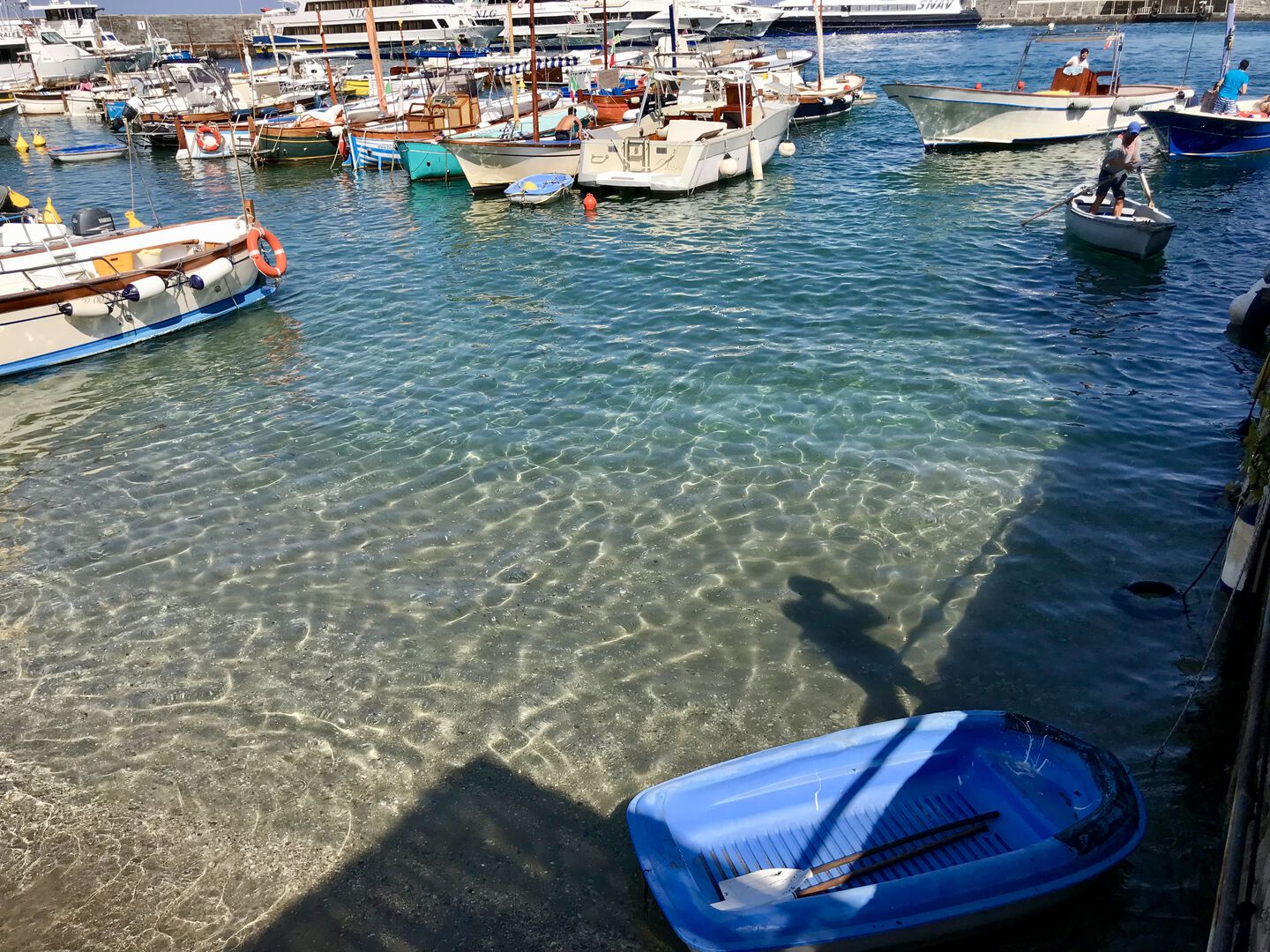
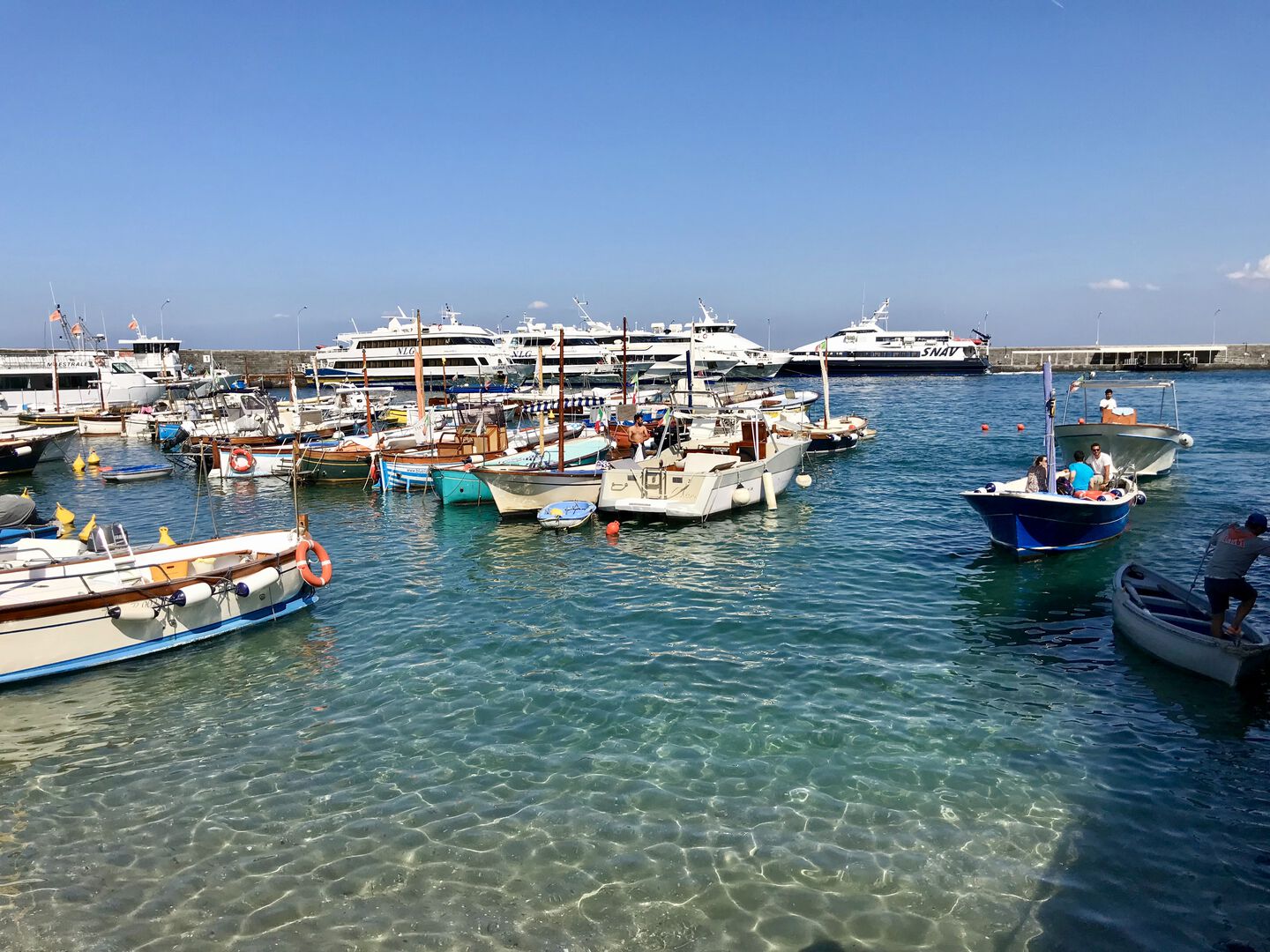
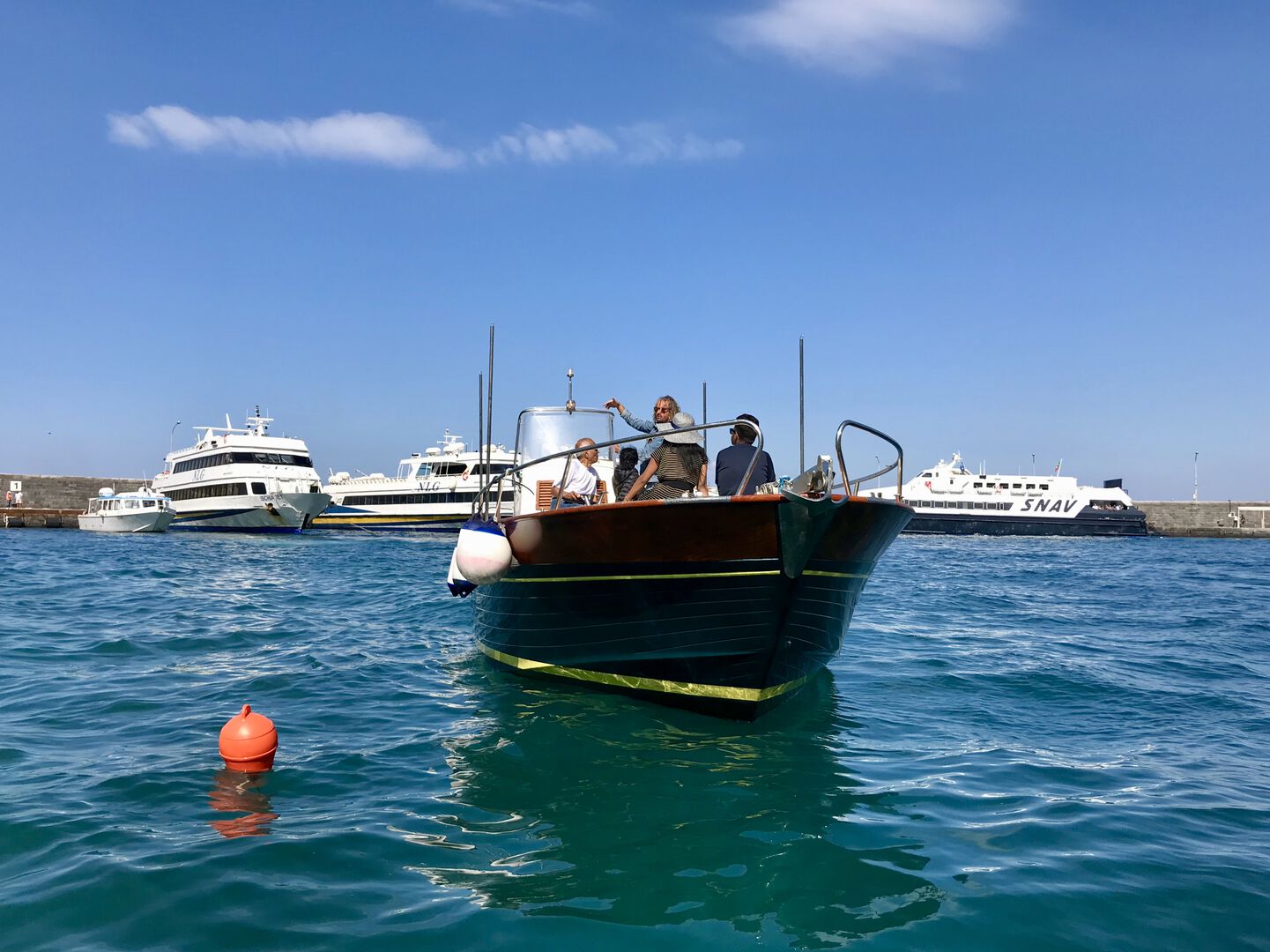
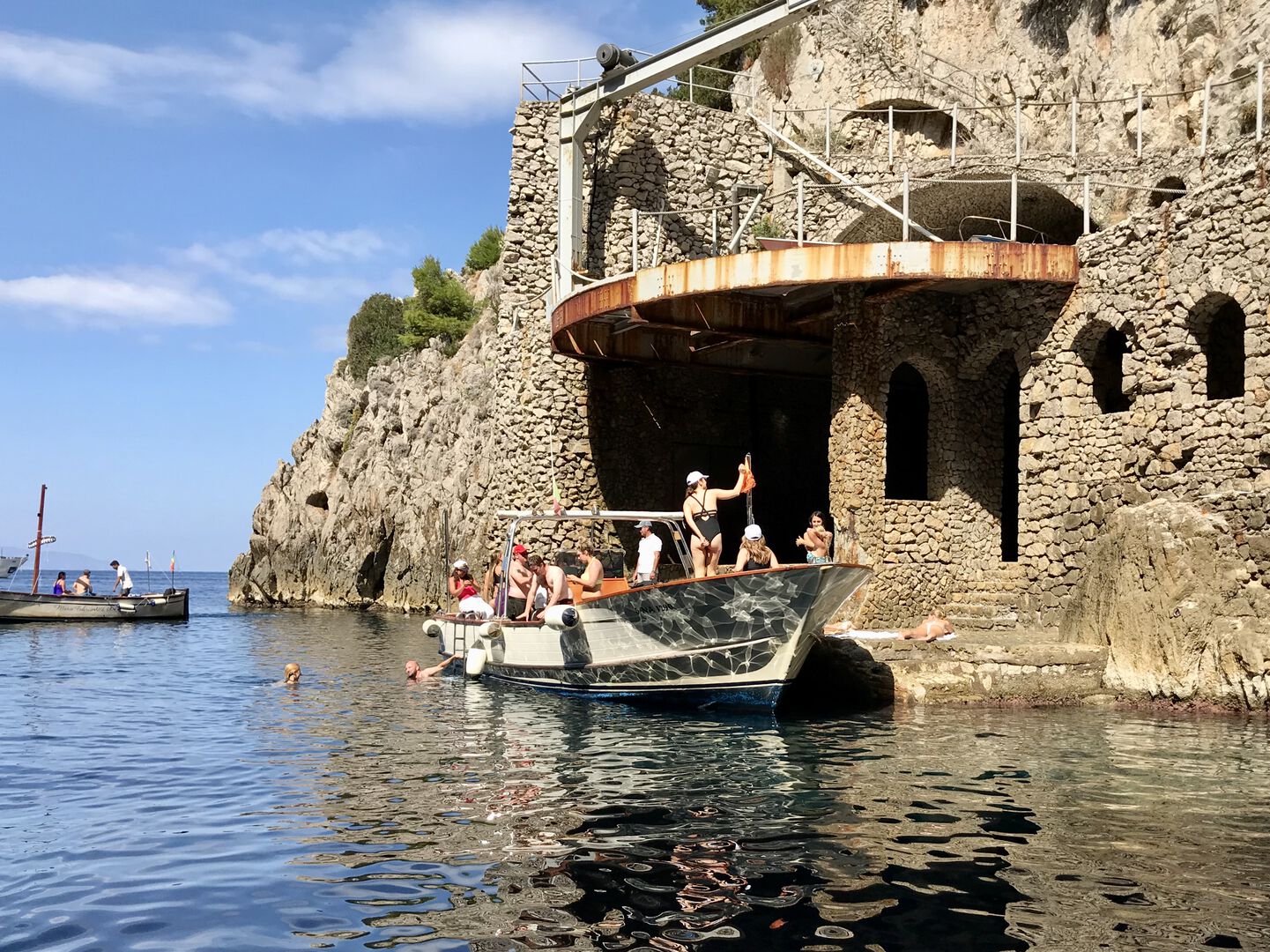
Blue Grotto
When light enters the cave through the water’s surface, the red light is filtered out, leaving only blue light to enter the cave. Objects placed in the water, notably famous for appearing silver, owe their appearance to bubbles that cover the objects when they are submerged. These bubbles cause the light to refract differently than the surrounding water, resulting in the silver effect.
People on the boat told us about the bluest blue grotto on the island, and we believed them. It turns out there are only a few:
- Blue Grotto, a sea cave on the island of Bisevo, Croatia
- Blue Grotto, a sea cave on Capri Island, Italy
- Blue Grotto, a cave on Kastellorizo, Greece
- Blue Grotto, a complex of sea caves on Malta
- Blue Grotto, a region at the end of Manhattan in Brooklyn Bridge
- Grotta dello Smeraldo, a sea cave on the Amalfi Coast, Italy
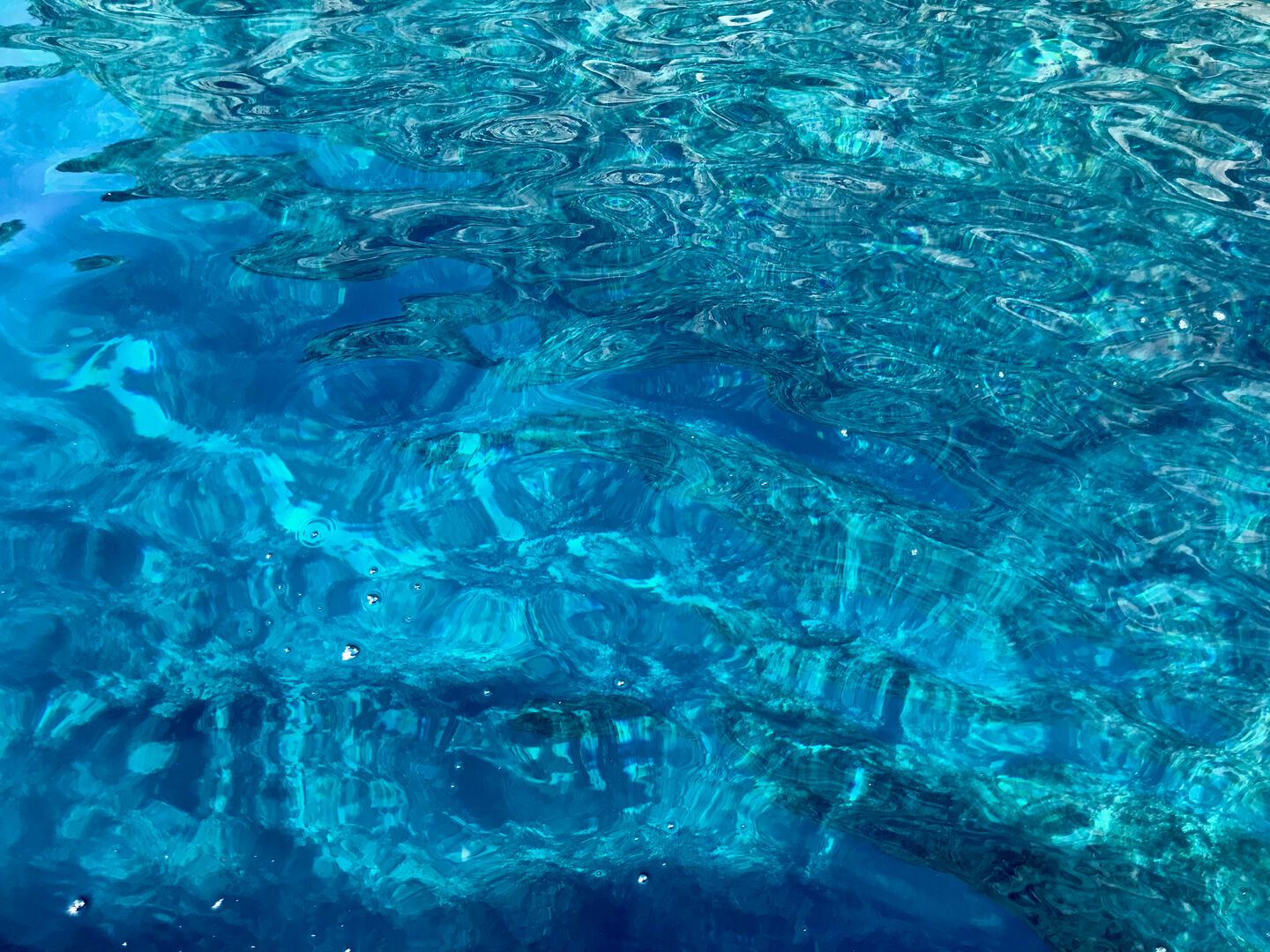
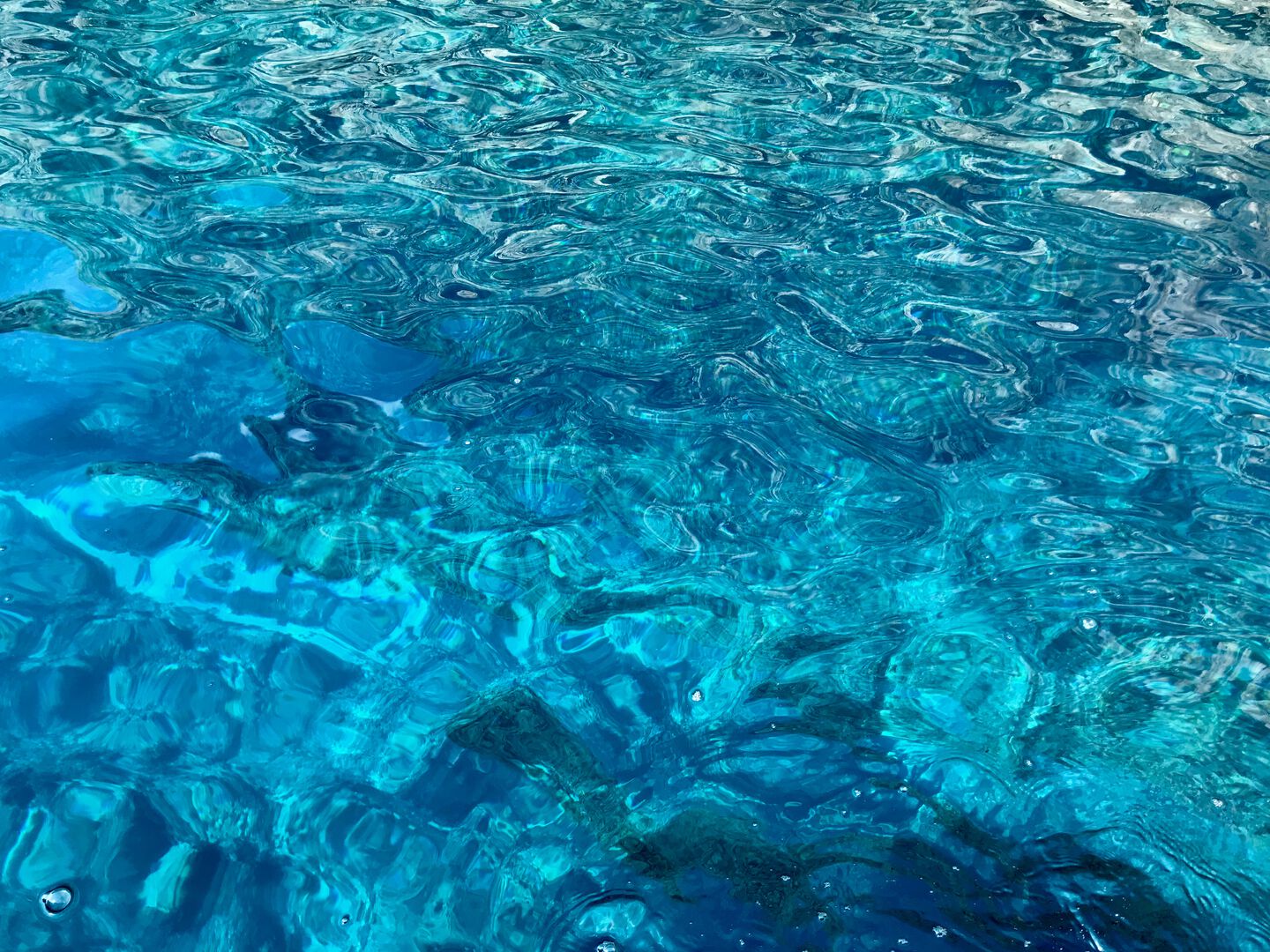
Mediterranean Blue
Unlike the Pacific Blue I saw in California, the Mediterranean Blue seems like a thick dye.
The Mediterranean is almost landlocked, affecting its conditions: for example, due to its narrow connection with the Atlantic, tides are quite limited. One characteristic of the Mediterranean is its deep blue color, which is evident at first glance.
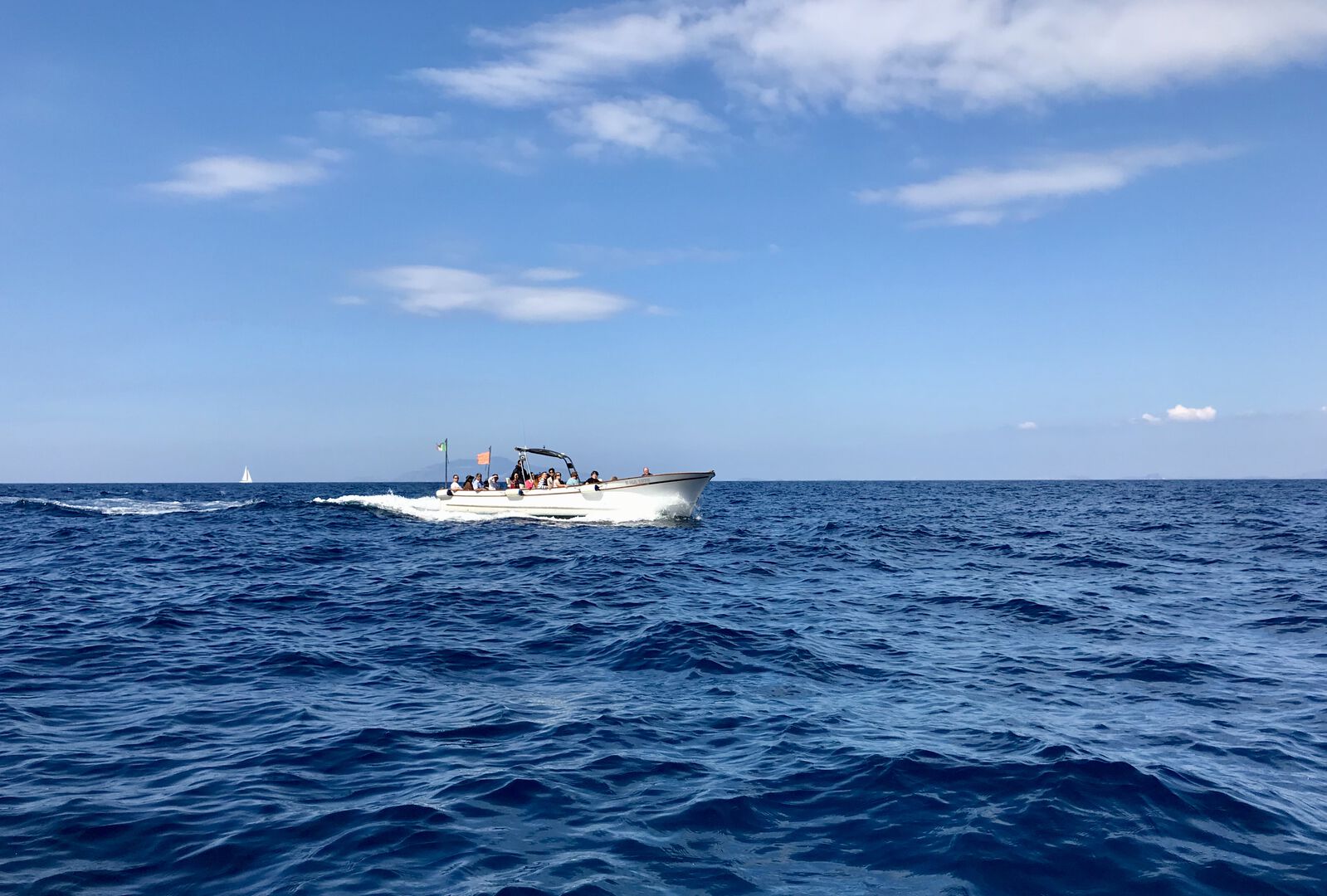
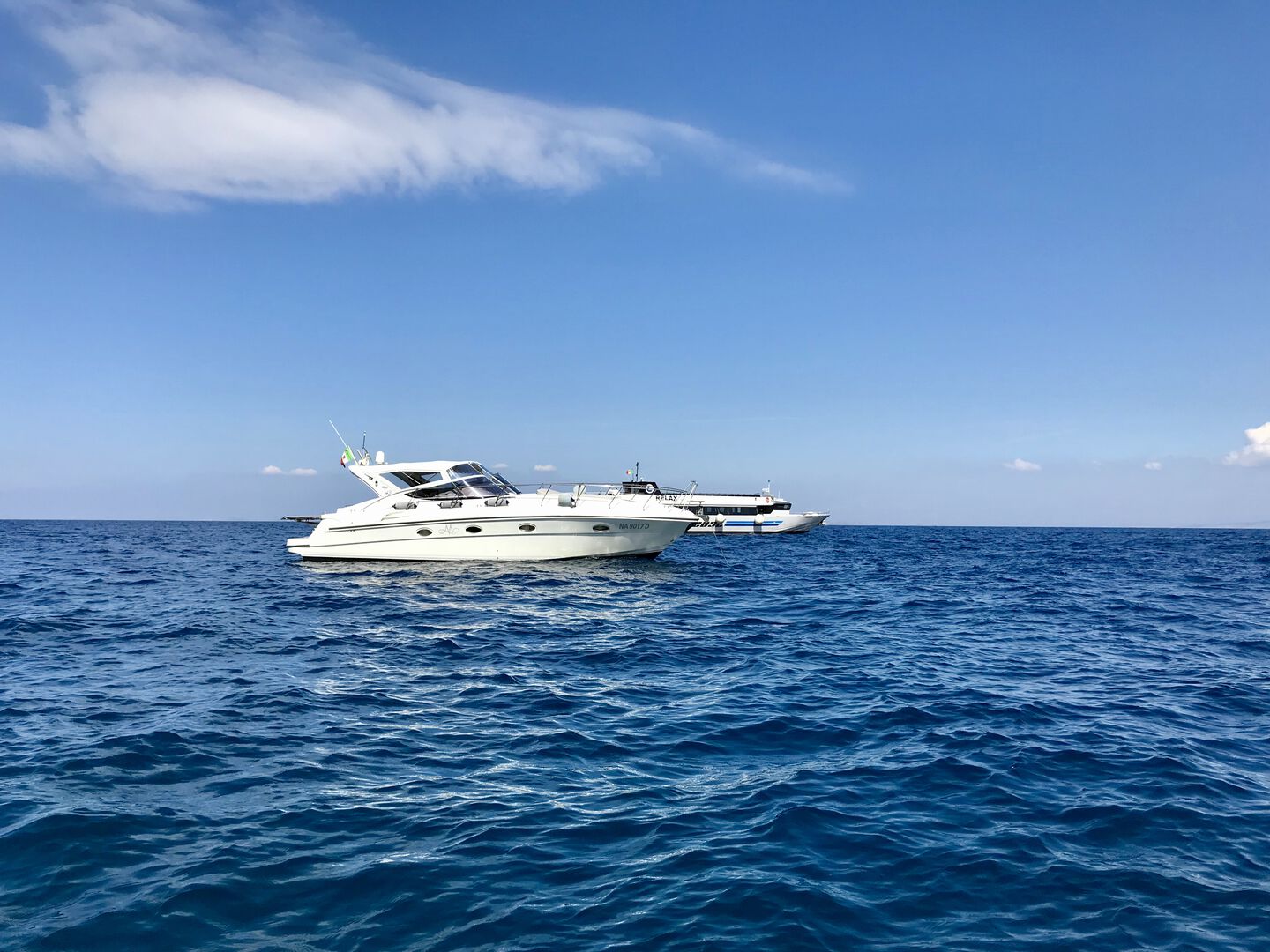
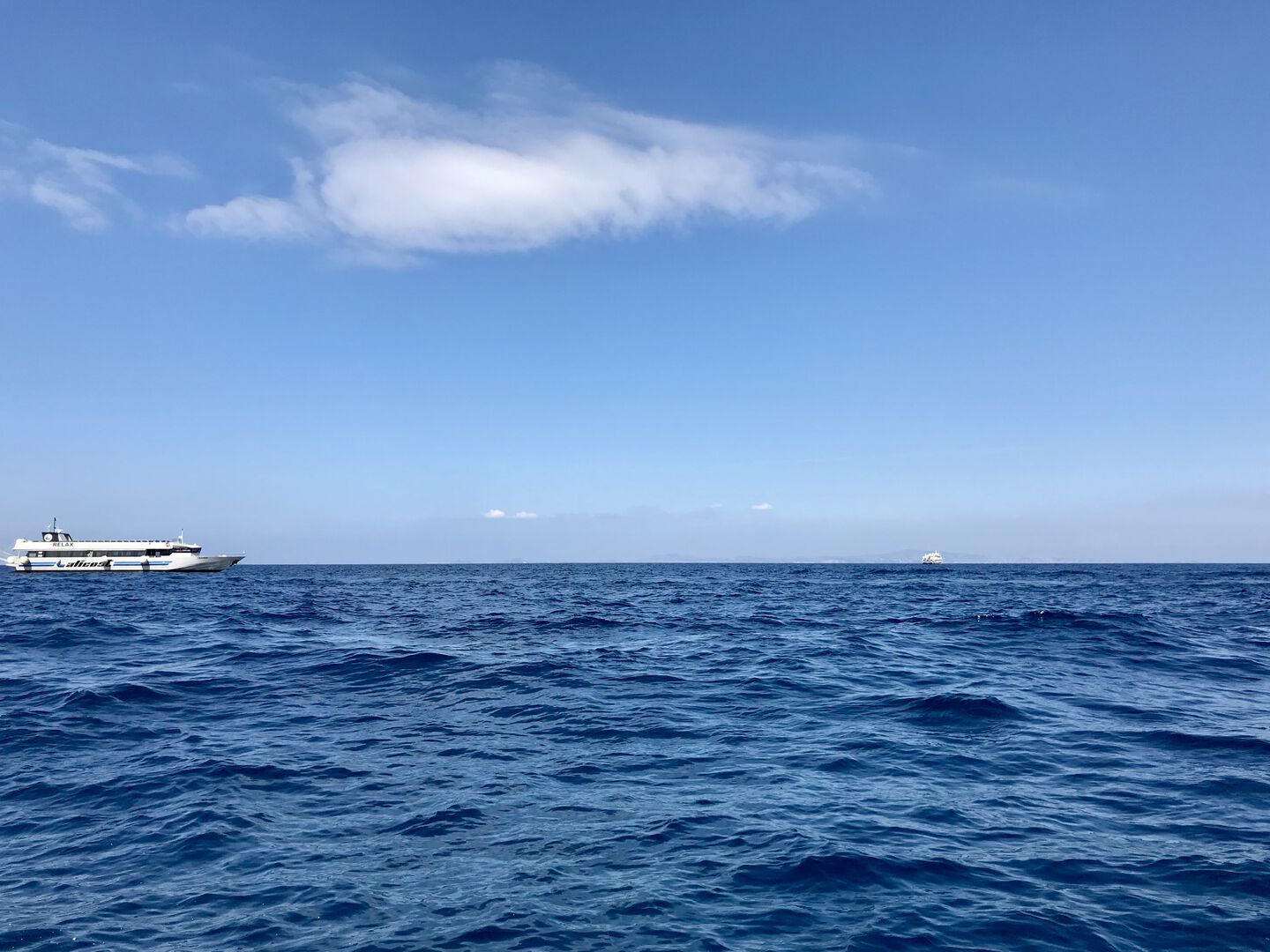
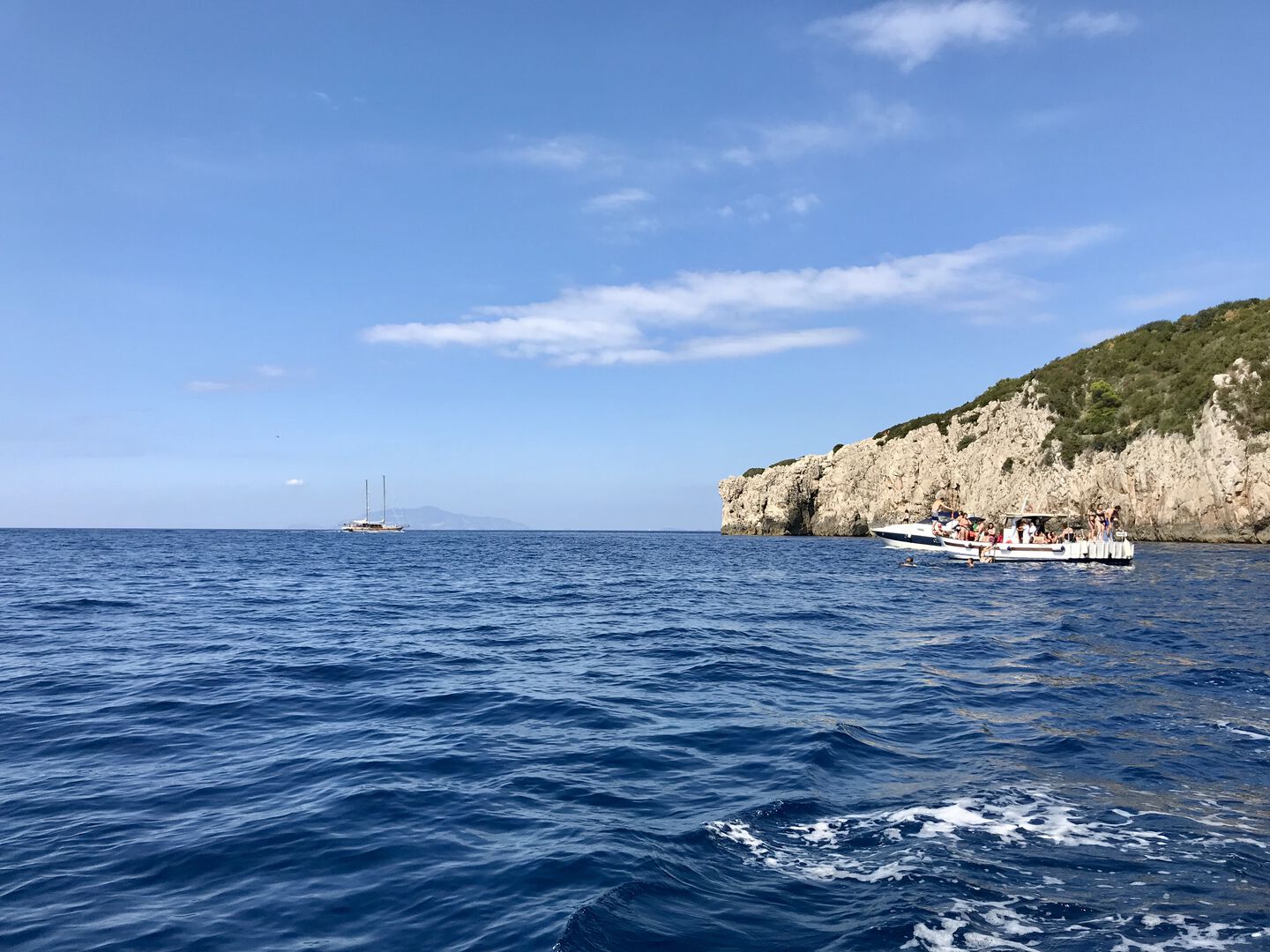
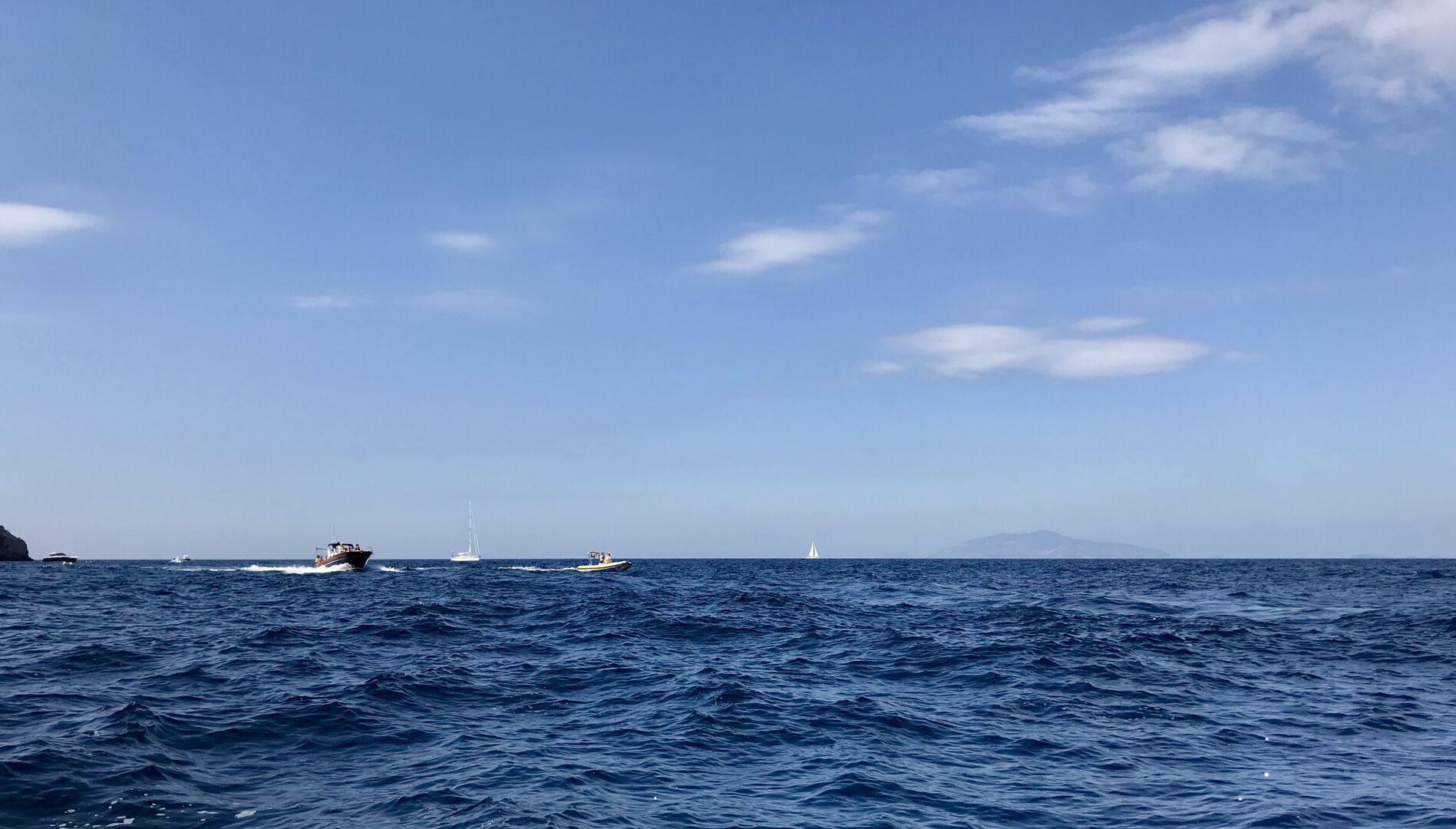
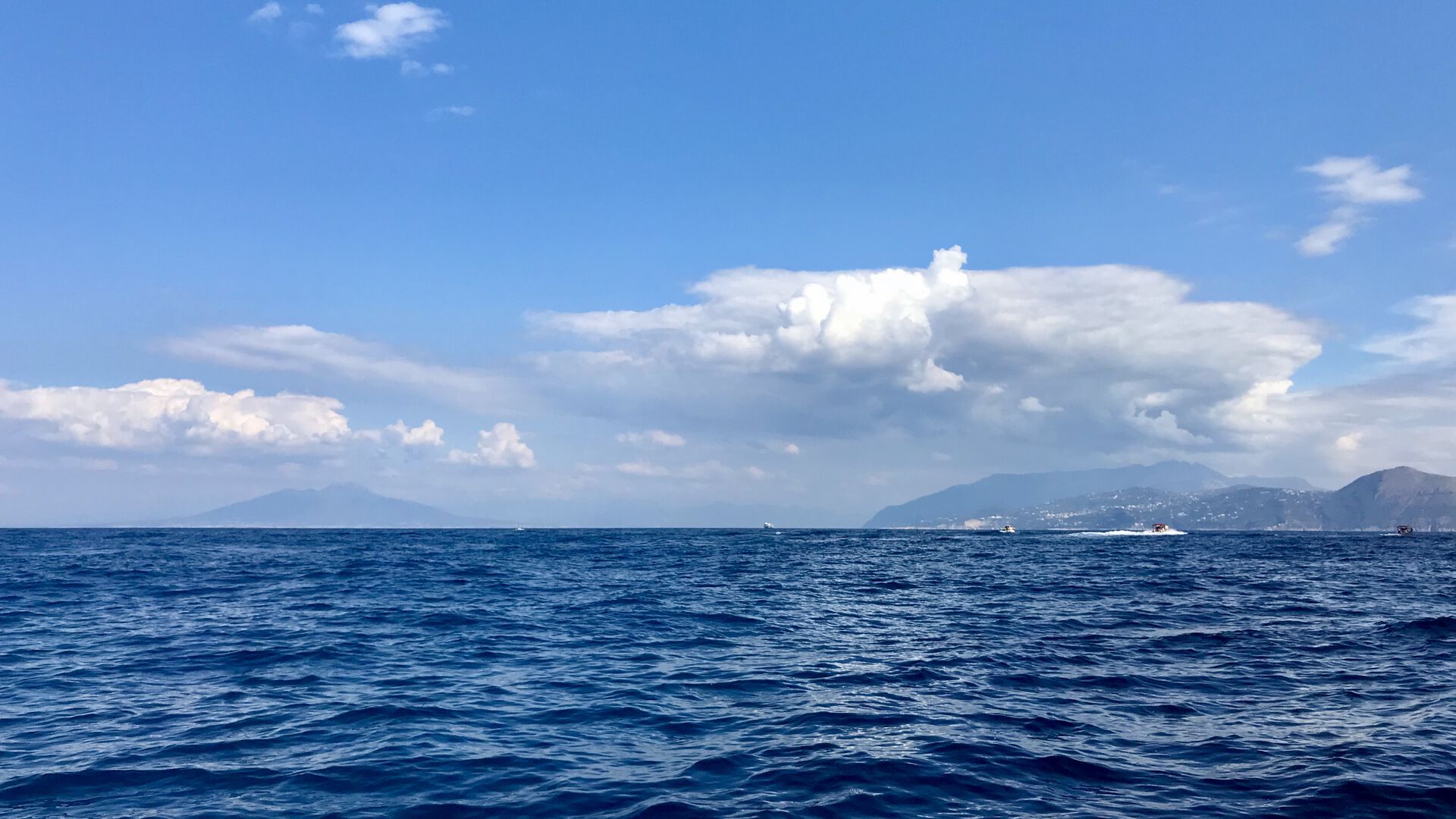
Translated by gpt-3.5-turbo